Recent Storm Damage Posts
How to Make Sure Your Home is Safe and Prepared for Winter Weather
9/25/2024 (Permalink)
As the winter months approach in Pennsylvania, preparing your home for the season's harsh conditions is essential. Pennsylvania winters are known for their freezing temperatures, snowstorms, and icy conditions, which can pose risks to your home and family. Here are some practical steps to ensure your home is safe, secure, and ready for whatever winter may bring.
- Inspect and Maintain Your Heating System
Your heating system is crucial during the cold months. Ensure it's in top condition by scheduling a professional inspection and maintenance. This includes checking your furnace or boiler, replacing filters, and inspecting vents for blockages. Pennsylvania's cold snaps can be intense, and a malfunctioning heating system could leave you in an uncomfortable—and potentially dangerous—situation.
- Seal Windows and Doors
Drafts around windows and doors can significantly increase heating costs and make your home less comfortable. Inspect the seals around all windows and doors, looking for gaps, cracks, or worn weatherstripping. Replace or repair any damaged areas to keep the cold air out and the warm air in. You might also consider installing storm windows or adding heavy drapes for extra insulation.
- Prepare Your Plumbing
Frozen pipes are a common problem in Pennsylvania's winter, especially during prolonged cold spells. To prevent pipes from freezing and potentially bursting, insulate exposed pipes in unheated areas like basements, attics, and garages. Consider installing pipe insulation or heat tape and ensure that your home's interior temperature remains above 55°F, even if you are away. Additionally, let faucets drip slightly during extreme cold to keep water moving through the pipes.
- Clear Gutters and Downspouts
Clogged gutters and downspouts can cause water to back up and freeze, leading to ice dams that can damage your roof, walls, and ceiling. Clean out all debris from your gutters before the first snow falls, and check for any signs of sagging or damage. Ensure that downspouts direct water away from the foundation to prevent ice buildup and potential water damage.
- Check Your Roof and Attic
A sturdy, well-maintained roof is essential for withstanding Pennsylvania’s heavy snowfalls. Inspect your roof for loose or damaged shingles, and repair them promptly to prevent leaks. Ensure that your attic is well-insulated and properly ventilated; this helps regulate the temperature and prevents ice dams from forming on your roof.
- Test Smoke and Carbon Monoxide Detectors
The use of heating equipment increases the risk of fires and carbon monoxide poisoning in winter. Make sure all smoke and carbon monoxide detectors are working correctly by testing them monthly and replacing batteries as needed. Consider installing additional detectors if you don’t already have them in key areas like bedrooms and hallways.
- Stock Up on Emergency Supplies
Winter storms in Pennsylvania can bring power outages, road closures, and other emergencies. Be prepared by stocking up on essential supplies, including bottled water, non-perishable food, flashlights, batteries, blankets, and a first-aid kit. A portable generator can be a good investment for backup power, but ensure it is used safely outdoors and away from windows and vents.
- Trim Trees and Secure Outdoor Items
Overhanging branches can become weighed down by snow and ice, posing a risk to your home and power lines. Trim any trees or shrubs near your home to prevent damage. Secure or store outdoor furniture, decorations, and other items that could become projectiles in strong winter winds.
- Service Your Chimney and Fireplace
If you have a fireplace, make sure it’s ready for use by having your chimney inspected and cleaned. Creosote buildup is a common cause of chimney fires, so an annual check-up is vital. Ensure the flue is in good working order and that there are no blockages that could prevent smoke and dangerous gases from escaping.
- Review Your Insurance Coverage
Winter weather can cause significant damage, from burst pipes to roof collapses. Review your homeowner’s insurance policy to ensure you are adequately covered for winter-related incidents. Understand what is covered, such as ice dams, water damage, or storm damage, and consider additional coverage if necessary.
By taking these steps to prepare your home for winter, you can help protect your property and loved ones from the unique challenges posed by Pennsylvania’s cold weather. If you need professional help or have questions about winter home safety, SERVPRO of Levittown is here to assist. Our team of experts is ready to help you prevent, mitigate, and recover from any winter weather damage. Stay warm and safe this season!
For more tips and assistance, contact SERVPRO of Levittown today!
Top Causes of Summer Storm Damage in Southeastern Pennsylvania and How to Protect Your Home
5/31/2024 (Permalink)
Summer in Southeastern Pennsylvania brings more than just warm weather and sunny days; it also ushers in the storm season. These storms, characterized by heavy rain, lightning, and high winds, can cause significant damage to homes and businesses if proper precautions are not taken. At SERVPRO of Levittown, we understand the importance of being prepared for these weather events. Here are the top causes of summer storm damage in our region and tips on how to protect your property.
Common Summer Storm Hazards
- Heavy Rain
Southeastern Pennsylvania often experiences intense rainfall during summer storms, which can lead to flooding. Flash floods can occur with little warning, causing water damage to basements, foundations, and the interior of buildings.
- Lightning
Summer storms are frequently accompanied by lightning, which poses a risk of fire and electrical surges. Lightning can strike trees, power lines, and buildings, resulting in significant damage.
- High Winds
Strong winds can accompany summer storms, bringing the potential for damage from falling trees, branches, and debris. High winds can also damage roofs, windows, and siding, leading to costly repairs.
Tips for Safeguarding Your Home
- Maintain Your Roof and Gutters
- Ensure your roof is in good condition by inspecting it regularly for loose or damaged shingles.
- Clean gutters and downspouts to prevent water from backing up and causing leaks or water damage.
- Consider installing gutter guards to keep debris out and ensure proper water flow.
- Trim Trees and Landscaping
- Trim branches and trees that are close to your home or business to reduce the risk of them falling during high winds.
- Remove dead or diseased trees that are more likely to fall in a storm.
- Install Surge Protectors
- Protect your electrical appliances and systems from lightning-induced power surges by installing surge protectors.
- Consider whole-house surge protection for comprehensive coverage.
- Secure Outdoor Items
- Bring in or securely anchor outdoor furniture, grills, and other items that could become projectiles in high winds.
- Ensure that storage sheds, fences, and other structures are well-anchored and maintained.
- Seal Windows and Doors
- Inspect and repair seals around windows and doors to prevent water from entering your property.
- Consider installing storm shutters or impact-resistant windows for added protection.
- Prepare an Emergency Kit
- Keep an emergency kit with essentials such as flashlights, batteries, first aid supplies, and important documents.
- Have a plan in place for what to do in case of an emergency, including evacuation routes and communication plans.
- Review Your Insurance Coverage
- Ensure that your insurance policy covers storm damage and consider additional flood insurance if your property is in a flood-prone area.
- Document your property and valuables with photos or videos to facilitate the insurance claims process if needed.
By understanding the common causes of summer storm damage in Southeastern Pennsylvania and taking proactive measures, you can protect your property and minimize the risk of costly repairs. At SERVPRO of Levittown, we are here to help you prepare for and recover from storm damage. If you need assistance with storm damage restoration, do not hesitate to contact us.
Stay safe and stay prepared!
SERVPRO of Levittown is your trusted partner in storm damage restoration, providing expert services to help you recover quickly and effectively. Call us today to learn more about our services and how we can assist you.
How to Protect Your Home When Tropical Storms Are Forecasted
9/22/2023 (Permalink)
Tropical storms can be incredibly destructive, causing extensive damage to homes and properties. While we can't control the weather, we can take steps to protect our homes and loved ones when tropical storms are forecasted. As a homeowner in Levittown or any other tropical storm-prone area, being prepared is essential. In this blog post, we'll explore some proactive measures you can take to safeguard your home when tropical storms are on the horizon.
- Stay Informed
The first step in protecting your home is to stay informed about weather conditions. Keep a close eye on weather forecasts and updates from reliable sources like the National Weather Service. Most smartphones have weather apps that can provide real-time updates, making it easier than ever to stay informed.
- Create a Preparedness Kit
Having a well-stocked storm preparedness kit is crucial. Your kit should include non-perishable food, bottled water, a flashlight, batteries, a first-aid kit, important documents, cash, and any necessary medications. Prepare enough supplies to last at least three days for each member of your household.
- Reinforce Windows and Doors
Strong winds and flying debris can easily break windows and doors during a tropical storm. Consider installing hurricane shutters or plywood to protect your windows. Reinforce entry doors with deadbolts and heavy-duty hinges, and make sure they fit tightly in their frames to prevent water intrusion.
- Trim Trees and Remove Loose Objects
Before a storm hits, trim any overhanging branches that could potentially fall and cause damage to your home. Secure outdoor furniture, garbage cans, and any loose objects that could become projectiles in high winds. Properly store or anchor these items to prevent them from causing damage.
- Check and Clean Gutters
Clogged gutters can lead to water pooling around your home's foundation, increasing the risk of flooding. Ensure your gutters and downspouts are clear of debris to allow for proper drainage. Consider installing gutter guards to prevent future clogs.
- Reinforce Your Roof
Inspect your roof for loose or damaged shingles, and make necessary repairs before the storm arrives. Consider using hurricane straps or clips to secure your roof to the structure of your home, preventing it from being lifted in strong winds.
- Elevate Electrical Systems
If your home is in a flood-prone area, consider elevating your electrical systems, including outlets, switches, and circuit breakers. Elevating these components can help prevent electrical damage and reduce the risk of fire.
- Secure Important Documents
Gather important documents like insurance policies, identification, and medical records, and store them in a waterproof and fireproof container. You may also want to make digital copies and store them securely in the cloud or on a portable hard drive.
- Evacuation Plan
Have an evacuation plan in place and discuss it with your family. Know your local evacuation routes and shelters. Ensure that everyone in your household knows how to contact each other in case you get separated during the storm. I would recommend having a place to meet outside of the storm area in case you do get separated.
- Consider Flood Insurance
Standard homeowners' insurance policies typically don't cover flood damage. If you live in a flood-prone area, consider purchasing flood insurance through the National Flood Insurance Program (NFIP) to protect your property. If you have a sump pump, make sure you have a sump pump rider on your policy. If you lose electricity or the sump pump fails your insurance should cover the loss.
- After the Storm
After the storm passes, carefully assess any damage to your home. Document the damage with photos or videos for insurance purposes, and contact your insurance company to begin the claims process. Be cautious when using generators, and follow safety guidelines to avoid carbon monoxide poisoning.
In the event of severe damage, such as flooding or extensive structural damage, consider reaching out to professionals like SERVPRO of Levittown for expert cleanup and restoration services. They can help you get your home back to its pre-storm condition quickly and safely and make it “Like it Never Even Happened”
While we can't control the weather, we can control how well-prepared we are for it. By following these steps and taking proactive measures, you can significantly reduce the risks and protect your home when tropical storms are forecasted. Stay safe, stay prepared, and remember that your safety and the safety of your loved ones are the top priorities during any severe weather event.
SERVPRO's Top Tips for Preparing Your Home for Summer Storms
9/7/2022 (Permalink)
Summer storms can be a real pain. They can knock out power, damage homes, and even cause injuries. That's why it's important to be prepared for them! SERVPRO is the nation's leading disaster restoration company, and we want to help you prepare your home for summer storms. In this blog post, we will discuss some tips that will help you stay safe during a storm and minimize the damage to your home.
Have a Plan
First, it's important to have a plan. Know what you will do if the power goes out or if your home sustains damage.
Have an Emergency Kit
Second, make sure you have an emergency kit prepared. This kit should include things like food, water, and first aid supplies.
Have a Safe Room
Third, keep your family safe by having a designated safe room in your home. This room should be away from windows and doors, and it should have sturdy walls and a ceiling.
Have Emergency Supplies
Fourth, make sure you have emergency supplies on hand, including a flashlight, batteries, and medicine.
Clean your Gutters
Fifth, keep your gutters and downspouts clean so that they can properly drain water away from your home.
Secure your Belongings
Sixth, if a storm is coming, secure any loose items outside so they don't become projectiles.
Contact SERVPRO of Levittown
Seventh, if you do sustain damage from a storm, be sure to contact SERVPRO of Levittown for all your restoration needs!
Following these tips will help you stay safe during a storm and minimize the damage to your home. We're always here to help, 24/7.
How to Prepare for a Storm: What You Need to Know
8/18/2022 (Permalink)
When a storm hits, it can cause a lot of damage to your home. If you are not prepared, you could be in for a long and costly recovery process. In this blog post, we will discuss some tips on how to prepare for a storm, so that you can minimize the damage done to your property. We will also talk about what to do if you experience storm damage, and how to contact SERVPRO Levittown if you need help.
The first step in preparing for a storm is to know what kind of storms are common in your area. Some of the common storms in Pennsylvania include thunderstorms, coastal hurricanes, and even the occasional tornado. Each of these storms can cause different types of damage, so it is important to be aware of the risks. Once you know what kind of storms are common in your area, you can take steps to protect your property.
One way to protect your property from storm damage is to have a plan in place. This plan should include an evacuation route, a list of emergency contacts, and a place to stay if you need to leave your home. It is also important to have insurance that covers storm damage. If you do not have insurance, you may want to consider getting it before a storm hits.
Another way to prepare for a storm is to make sure that your home is in good condition. This means that you should repair any damage that has already been done, and take steps to prevent further damage. For example, you should trim trees and bushes away from your house, and secure loose items around your property. By taking these steps, you can help to minimize the amount of damage done to your home during a storm.
If you do experience storm damage, the first thing you should do is contact SERVPRO Levittown. We are a professional storm damage restoration company, and we can help you to repair the damage done to your home. We will work with your insurance company to ensure that all of the repairs are covered, and we will help you to get your home back to normal as quickly as possible.
If you have any questions about storm damage or how to prepare for a storm, please contact SERVPRO Levittown. We are always here to help, and we can make sure that your home is in good condition before a storm hits.
Tips on Making It through the Storm
12/9/2021 (Permalink)
It is not surprising that the storms all around the world are getting stronger and deadlier. A lot of it has to do with climate change. No matter the level and strength of the storm it is bound to leave some level of destruction in its way. So it is very important to know how you can stay strong during the storm and prevent any damage to your house. Let’s take a look at a few tips.
Stay Calm
The first thing you should do is to try and stay as calm as possible. This will not only help you clear your mind, but also see things more clearly and focus on the task at hand. It will prevent any rash decisions and allows you to be much more effective.
Trim off branches
Branches can easily damage big parts of your roof. It’s much better to have them off as soon as possible. You can use a chain saw or electric chainsaw for this job. In case you don’t have one at hand, a strong bladed knife will do the trick too. Just make sure to take your time and be careful not to hurt yourself in the process.
Protect entrances
You should do your best to protect the entrances of your house. This is so that you don’t get any damage from flying objects or debris. You can use sand bags for this or if you have enough, simply move some heavy items in front of the doors and windows.
Stay away from windows
Staying away from windows is a very important thing to do. This way you’re not exposing yourself to possible debris, broken glass and other objects that could cause you severe injuries.
Cover up windows
This is especially important if you live in areas where the house is exposed to strong winds. You should make sure that all windows are covered as good as possible with cloth or thick plastic sheets. This way the house is a lot more resistant to breaking in wind and flying debris.
Protect yourself
You should further protect yourself by wearing gloves, goggles and a long sleeve shirt. By doing this you at least don’t expose your skin to possible damage from broken glass or other sharp objects. You can also use some kind of mask so that you don’t breath in the dust and particles in the air.
Be Aware Of the Weather Updates
You should always try to stay up to date with the weather updates. This way you will know what kind of disaster is going on and how long it is expected that it will still last. That way you can better prepare yourself and have a plan in place on what you should do when things get worse during the storm.
Move the Furniture Away From the Windows and Doors
You should do whatever you can to protect larger and heavier items in the house. Especially when it comes to things near the doors and windows. Things like sofas, chairs, tables or any other heavy object can easily get damaged if they are near the windows so try to move them away from the windows and doors.
Take Before and After Pictures
It’s always very important to take pictures or make some kind of inside map of your house before the storm hits. That way you can better assess what damage might have happened after everything calms down again. If there are any damages insurance companies will need this information in order to reimburse you.
Know the Instructions Given By the Relevant Authorities
It is always important to know what the authorities are saying in its instructions. Never ignore them, even if you don’t think they are serious. This way you can make sure that you don’t do anything wrong or dangerous and be able to assess the situation better.
What Measure Can You Take To Prevent Storm Damage
12/9/2021 (Permalink)
The loss of life and property due to the destruction caused by powerful storms is a significant problem both in the United States and across the globe. People are often unaware of how best to prepare for these severe weather events, but there are measures that can be taken beyond waiting anxiously at home or fleeing just before landfall. The National Hurricane Center routinely issues storm advisories to inform residents of areas potentially affected by hurricanes, typhoons, tropical cyclones, and other types of severe weather about watches and warnings as well as potential storm surge levels so they may plan appropriately. Residents should understand what these terms mean so they know what action they should take if their community faces an imminent threat from a storm system. Having advance notice allows people more time to seek shelter, avoid evacuation routes, and stock up on supplies that will help them stay safe until the storm has passed. In addition to these advisories, meteorologists can provide advanced notice of tropical storms including their strength as well as expected wind speeds and rainfall totals so people have a better idea of how much danger they are in if a storm hits.
Cover Your Windows with Wooden Panels to Keep the Wind Out
One of the worst things about storms is that they can cause your home or apartment to lose power, which means you need to shut your windows. This leaves you vulnerable to wind getting into your home without any protection. Wooden panels are very easy to install and will give you some peace of mind knowing that if a storm hits, your windows are safe from debris flying through them. You should also make sure all doors are covered with boards as well since strong winds could knock over trees or break branches off of them which would go right through a door and leave you exposed.
Make Sure You Have Proper Plumbing Protection
While most people don't think about it during a storm, flooding is actually one of the biggest killers associated with them. This is because floods cause so much debris, such as tree limbs and furniture, to go flying through the air and can pierce through your home's walls or doors if they are not protected. Your best bet is to install a backwater valve on your exterior plumbing so any flood waters will be diverted away from your house instead of coming in and putting you in more danger if they do damage your home.
Protect the Outdoor Items like Cars and Outside Lighting
Strong winds can easily tip over objects that are lighter than they are, leaving you vulnerable to anything that falls. Making sure all of your outdoor items are properly weighed down or tied down will save you from having to deal with the aftermath of a storm in addition to protecting yourself from any injuries. If you have outdoor lighting on your property, make sure they were secured as well since strong winds could knock them over and cause electrical shorts, putting you at risk for fire.
Protect Your Electronics In The Event Of a Power Outage
Although it is not possible to predict whether a power outage caused by a severe weather event will be short lived or last for days, many people do not take the time to protect their smartphones and tablets in this type of situation. A simple solution would be to get a battery backup charger for all of your electronics including laptops, cell phones, tablets, and more. These are relatively inexpensive ways to ensure you have access to your digital life even when the power is out.
What Things Do You Need To Protect During a Storm
12/9/2021 (Permalink)
There are a few things you need to protect during a storm. The most common thing people think of is their house, but there's a little more to it than that if they want to be safe and secure throughout the whole process.
In this article we're going to talk about what type of things you need to protect from thunderstorms as well as some tips on how to start protecting those items now instead of later when the weather may get rough.
The Top 10 Items to Protect In a Storm:
1) Windows - Pay attention to windows – especially bay windows – around your home. These can be easily shattered by strong winds, so assess if they’re in any danger and take steps.
2) Side Entries - If you have side entrances on your home, there are a few things you need to consider. First, make sure the doors are shut tight so that strong wind doesn’t blow them open or push water into your entryway. Second, for those with garages that have windows down next to the door.
3) Downspouts – Your gutter is one of the most important parts of having a storm resistant home.
4) Soffits – Another feature very common with houses today are eaves outside areas around decks or porches. If these have ventilation grates above them, check to see if they’re closed up tight and safe from damage during the storms....
5) Gutters – Make sure your gutters are open and draining.
6) Roof Leaks – A common problem with heavy rain is roof leaks. If you have an older home or one that hasn’t had some roof work done, there might be some problems. Make sure the areas around skylights are covered up.
7) Decks & Porches - Areas around decks can easily get flooded, so make sure they're clear of anything that would prevent water from getting out of the way during a storm.
8) Sidewalks -This is pretty simple - if it rains after a big storm, make sure to completely clean off any debris in the sidewalk.
9) Sheds - If you have sheds on your property, make sure they're closed up tight and that there's no debris or other things that might fly around in the wind.
10) Trees - If trees are hanging over your house, you should consider getting them trimmed by a professional tree service company before the storm to keep down on any damage done.
Final Words
These are some of the major things that can be damaged in a storm so you should be very careful in trying to protect them because if these things get damaged they will not only cost your financially but may also end up injuring you as well. The most important thing to remember is that your house and everything in it can be replaced, but you cannot. Take the necessary steps to protect your home and family prior to a storm and you'll save yourself a lot of stress when trying to recover from one.
Why You Shouldn’t Delay Storm Damage Restoration
12/1/2021 (Permalink)
When a disaster occurs, it is easy to get caught up in the chaos and stress of the situation. It is also very tempting to want to put off or delay storm damage restoration because you are busy with other things, but doing so can have a devastating effect on your finances. If you wait too long before hiring professionals for storm damage restoration, then prices for items that have been damaged will skyrocket. If you need help restoring your property after a natural disaster, contact our team today!
Your Home's Value Will Go Down
A home’s value can drop by as much as ten percent if the house has not yet undergone repairs after a major disaster such as flooding or fire. If your property sustains significant damage because of natural disasters, contact our team today! We are here to help 24/365 so do not hesitate to call us at any time of day or night! You may also fill out an online form for more information about what we offer and how we can help restore your home back to normal again.
It Will Cost You More If You Delay It
If you do not call for help when your home needs storm damage restoration, then it will cost more in the long run. When a professional is called to handle storm damage restoration as quickly as possible after a natural disaster strikes, this helps ensure that no further damages are sustained from exposure or rot. This can be very costly if it goes on too long because of how much time and exposure has passed since the initial incident occurred!
Your Goods Will Get More Damaged
If you wait to call for storm damage restoration, then it will take longer to fix your home and the cost of items that have been damaged may go up. In some cases, if a person waits too long before calling in professionals for storm damage restoration services after a natural disaster strikes, they can cause further damages or loss because of exposure or rot. It is important not to delay when you need help with restoring your property after a major event! Call us today at any time so we can start helping right away! We also offer free estimates on our work as well!
It Will Create a Dangerous Living Environment
If you allow your home to remain in a state of disrepair, then it can become unsafe for living. Living with damaged property due to natural disasters is not only dangerous but also hazardous because the items are exposed and vulnerable after being left out in nature’s elements without protection for so long. Not calling in professionals immediately when damage occurs leaves you and your loved ones at risk of injury or illness.
The longer you wait, the worse things will get and it can be very costly. Let us help today by giving our team a call at any time of day or night so we can offer free estimates on storm damage restoration services that are needed after natural disasters strike in your area. Our number is always available for assistance and we do not charge anything unless we solve your problem with helping restore damaged items back to normal again! Contact us now so we can start working together right away!
Why You Should Clean Your Sewers after a Storm
12/1/2021 (Permalink)
The last thing you want when a storm has passed is to find that the sewer in your home or business has backed up and flooded. These floods can be caused by heavy rain, snow melt, or even an ice dam on top of your roof. Whatever the cause, they're not only unpleasant and smelly but also dangerous for people and property below.
So what do you do if this happens? You need to call a professional plumber who knows how to handle the situation!
Clean Sewerage Means Healthy Environment
Clean sewerage means a healthier environment. For those who have an inflow and infiltration issue, this is even more important as it puts the surrounding area at risk of further damage from sewage back-ups that may occur in the future which could lead to having to replace your property's foundation or walls due to underlying structural issues resulting from prolonged exposure to raw sewage seeping up through them. In these cases, cleaning sewerage can help prevent unnecessary repairs down the road by making sure you get rid of any excess water before calling a plumber for assistance!
If It Is Not Clean It Can Block Your Entire Drainage System
If you have a blocked drain, it will not only lead to foul-smelling water back up into your home or business but also put the surrounding area at risk of further damage from sewage seeping through floors and walls. In this case, cleaning sewerage can help prevent unnecessary repairs down the road by making sure you get rid of any excess water before calling a plumber for assistance!
In some cases when there has been an ice dam on top of your roof that is melting, if left untreated it could overflow over the side and find its way down underground where it might be able to freeze again in certain spots which would block all drainage systems below. This form of stoppage requires immediate action as well because once frozen solid even professional plumbers will not be able to get past it and you'll lose your home or business.
It Is Not Just About Surface Cleaning
Do not assume that just because the water on top of your driveway has receded, everything is back to normal! This surface level flooding occurs in some cases when there's a blocked drainage pipe below so don't let yourself become complacent too soon! It might appear as though all the damage has been done but if someone doesn't come out and clean sewerage after a storm it can create more problems down the line by blocking up other drains further away from where the original block occurred which means even more flooded basements and lots of additional work for plumbers like us.
Blocked Sewerage Can Damage the Foundations of Your Building
If you have a blocked sewerage system, this can create more problems down the line by causing water to seep up through your floor and foundation below. This not only damages the structure of your building but also puts it at risk from being compromised with flooding in addition to giving off an unpleasant odor which could drive away customers or tenants. In some cases when there has been an ice dam on top of your roof that is melting, if left untreated it could overflow over the side and find its way down underground where it might be able to freeze again in certain spots which would block all drainage systems below. Clean sewerage means healthier environment! If you need professional help call us now for immediate service!
Hire SERVPRO for Sewer Cleaning Services
If you find yourself with a blocked drain, leaking water from the ceiling or back up of foul-smelling, untreated sewerage it is important to call SERVPRO right away. We offer immediate service and will send our team over as soon as we can so they can get your drainage system cleaned out and working properly again without any further trouble down the line.
What Things Do You Need To Protect During a Storm
12/1/2021 (Permalink)
There are a few things you need to protect during a storm. The most common thing people think of is their house, but there's a little more to it than that if they want to be safe and secure throughout the whole process.
In this article we're going to talk about what type of things you need to protect from thunderstorms as well as some tips on how to start protecting those items now instead of later when the weather may get rough.
The Top 10 Items to Protect In a Storm:
1) Windows - Pay attention to windows – especially bay windows – around your home. These can be easily shattered by strong winds, so assess if they’re in any danger and take steps.
2) Side Entries - If you have side entrances on your home, there are a few things you need to consider. First, make sure the doors are shut tight so that strong wind doesn’t blow them open or push water into your entryway. Second, for those with garages that have windows down next to the door.
3) Downspouts – Your gutter is one of the most important parts of having a storm resistant home.
4) Soffits – Another feature very common with houses today are eaves outside areas around decks or porches. If these have ventilation grates above them, check to see if they’re closed up tight and safe from damage during the storms....
5) Gutters – Make sure your gutters are open and draining.
6) Roof Leaks – A common problem with heavy rain is roof leaks. If you have an older home or one that hasn’t had some roof work done, there might be some problems. Make sure the areas around skylights are covered up.
7) Decks & Porches - Areas around decks can easily get flooded, so make sure they're clear of anything that would prevent water from getting out of the way during a storm.
8) Sidewalks -This is pretty simple - if it rains after a big storm, make sure to completely clean off any debris in the sidewalk.
9) Sheds - If you have sheds on your property, make sure they're closed up tight and that there's no debris or other things that might fly around in the wind.
10) Trees - If trees are hanging over your house, you should consider getting them trimmed by a professional tree service company before the storm to keep down on any damage done.
Final Words
These are some of the major things that can be damaged in a storm so you should be very careful in trying to protect them because if these things get damaged they will not only cost your financially but may also end up injuring you as well. The most important thing to remember is that your house and everything in it can be replaced, but you cannot. Take the necessary steps to protect your home and family prior to a storm and you'll save yourself a lot of stress when trying to recover from one.
What Measure Can You Take To Prevent Storm Damage
12/1/2021 (Permalink)
The loss of life and property due to the destruction caused by powerful storms is a significant problem both in the United States and across the globe. People are often unaware of how best to prepare for these severe weather events, but there are measures that can be taken beyond waiting anxiously at home or fleeing just before landfall. The National Hurricane Center routinely issues storm advisories to inform residents of areas potentially affected by hurricanes, typhoons, tropical cyclones, and other types of severe weather about watches and warnings as well as potential storm surge levels so they may plan appropriately. Residents should understand what these terms mean so they know what action they should take if their community faces an imminent threat from a storm system. Having advance notice allows people more time to seek shelter, avoid evacuation routes, and stock up on supplies that will help them stay safe until the storm has passed. In addition to these advisories, meteorologists can provide advanced notice of tropical storms including their strength as well as expected wind speeds and rainfall totals so people have a better idea of how much danger they are in if a storm hits.
Cover Your Windows with Wooden Panels to Keep the Wind Out
One of the worst things about storms is that they can cause your home or apartment to lose power, which means you need to shut your windows. This leaves you vulnerable to wind getting into your home without any protection. Wooden panels are very easy to install and will give you some peace of mind knowing that if a storm hits, your windows are safe from debris flying through them. You should also make sure all doors are covered with boards as well since strong winds could knock over trees or break branches off of them which would go right through a door and leave you exposed.
Make Sure You Have Proper Plumbing Protection
While most people don't think about it during a storm, flooding is actually one of the biggest killers associated with them. This is because floods cause so much debris, such as tree limbs and furniture, to go flying through the air and can pierce through your home's walls or doors if they are not protected. Your best bet is to install a backwater valve on your exterior plumbing so any flood waters will be diverted away from your house instead of coming in and putting you in more danger if they do damage your home.
Protect the Outdoor Items like Cars and Outside Lighting
Strong winds can easily tip over objects that are lighter than they are, leaving you vulnerable to anything that falls. Making sure all of your outdoor items are properly weighed down or tied down will save you from having to deal with the aftermath of a storm in addition to protecting yourself from any injuries. If you have outdoor lighting on your property, make sure they were secured as well since strong winds could knock them over and cause electrical shorts, putting you at risk for fire.
Protect Your Electronics In The Event Of a Power Outage
Although it is not possible to predict whether a power outage caused by a severe weather event will be short lived or last for days, many people do not take the time to protect their smartphones and tablets in this type of situation. A simple solution would be to get a battery backup charger for all of your electronics including laptops, cell phones, tablets, and more. These are relatively inexpensive ways to ensure you have access to your digital life even when the power is out.
Tips to Making It through the Storm
12/1/2021 (Permalink)
It is not surprising that the storms all around the world are getting stronger and deadlier. A lot of it has to do with climate change. No matter the level and strength of the storm it is bound to leave some level of destruction in its way. So it is very important to know how you can stay strong during the storm and prevent any damage to your house. Let’s take a look at a few tips.
Stay Calm
The first thing you should do is to try and stay as calm as possible. This will not only help you clear your mind, but also see things more clearly and focus on the task at hand. It will prevent any rash decisions and allows you to be much more effective.
Trim off branches
Branches can easily damage big parts of your roof. It’s much better to have them off as soon as possible. You can use a chain saw or electric chainsaw for this job. In case you don’t have one at hand, a strong bladed knife will do the trick too. Just make sure to take your time and be careful not to hurt yourself in the process.
Protect entrances
You should do your best to protect the entrances of your house. This is so that you don’t get any damage from flying objects or debris. You can use sand bags for this or if you have enough, simply move some heavy items in front of the doors and windows.
Stay away from windows
Staying away from windows is a very important thing to do. This way you’re not exposing yourself to possible debris, broken glass and other objects that could cause you severe injuries.
Cover up windows
This is especially important if you live in areas where the house is exposed to strong winds. You should make sure that all windows are covered as good as possible with cloth or thick plastic sheets. This way the house is a lot more resistant to breaking in wind and flying debris.
Protect yourself
You should further protect yourself by wearing gloves, goggles and a long sleeve shirt. By doing this you at least don’t expose your skin to possible damage from broken glass or other sharp objects. You can also use some kind of mask so that you don’t breath in the dust and particles in the air.
Be Aware Of the Weather Updates
You should always try to stay up to date with the weather updates. This way you will know what kind of disaster is going on and how long it is expected that it will still last. That way you can better prepare yourself and have a plan in place on what you should do when things get worse during the storm.
Move the Furniture Away From the Windows and Doors
You should do whatever you can to protect larger and heavier items in the house. Especially when it comes to things near the doors and windows. Things like sofas, chairs, tables or any other heavy object can easily get damaged if they are near the windows so try to move them away from the windows and doors.
Take Before and After Pictures
It’s always very important to take pictures or make some kind of inside map of your house before the storm hits. That way you can better assess what damage might have happened after everything calms down again. If there are any damages insurance companies will need this information in order to reimburse you.
Know the Instructions Given By the Relevant Authorities
It is always important to know what the authorities are saying in its instructions. Never ignore them, even if you don’t think they are serious. This way you can make sure that you don’t do anything wrong or dangerous and be able to assess the situation better.
How To Protect Your Workplace From Natural Disasters
9/8/2021 (Permalink)
How To Protect Your Workplace From Natural Disasters
We never know when a disaster can strike. This is why it is extremely important to take the necessary steps to protect the property. Protecting your workplace from natural disasters is just as important as protecting your house. So, if your organization is not prepared for such emergencies and natural disasters, you need to take the necessary steps to protect it. Want to know how you can protect your workplace from natural disasters? Keep reading then.
Evaluate Your Area
If you want to be best prepared for natural disasters at the workplace, you need to evaluate and examine your office area and determine which natural disaster poses a possible threat to the area in which your office is located. You should not only evaluate the area in which your office is located, but you should also evaluate your office building as well. It will help you in determining the possible threats to which your office may be exposed and take necessary steps to secure the property.
Come Up With Emergency Plans
Once you have found out the possible threats to which your workplace is exposed, you need to create emergency plans to face these natural disasters. It will help you protect your organization and the workers of your organization as well. The plan should include what to do if the disaster hits your workplace and how to deal with the problem afterward. It should additionally include the ways to ensure the smooth flow of your business when your workplace is hit by an emergency.
Test The Plan
Once you have created the emergency plan that is needed to deal with the natural disasters, you need to make sure that the plan is effective as well. This is why you must test your emergency plan to make sure that it is effective and runs smoothly.
Prepare Emergency Kits
Even though all the companies have the necessary first aid kits to deal with emergencies, it is extremely important to have an emergency kit prepared to deal with natural disasters. For example, if your workplace is exposed to floods, and your workers are not able to travel in such a situation, you need to have the necessary supplies available to deal with such a situation. Some examples of these emergency kits include food and water, personal hygiene items, batteries, radio, etc.
Prepare Your Employees
Apart from preparing emergency kits for your workers, you need to prepare your employees to deal with the emergency as well. Preparing your employees will help them in dealing with natural disasters. Therefore, each of your employees should be trained and prepared for these natural disasters. For this, you need to equip and train your staff with the skills that are needed to deal with the situation such as CPR training and first aid courses.
Creating a solid emergency plan for your workplace to deal with natural disasters is extremely important. It will help you protect your workplace and your employees as well. For more details on how to create an effective emergency plan for your workplace, feel free to contact SERVPRO.
Steps To Take After Storm Damage
8/11/2021 (Permalink)
A storm can be quite scary and having to deal with its after-effects is challenging. It can leave behind a lot of damage that you will have to take care of. For this reason, you need to have all the right steps in front of you so that you can restore your home as quickly as possible. Here are 5 steps that you will have to follow after suffering from storm weather damage.
Check How Much Damage Is Done
Before you go on to figuring out the solution for the damage, you will have to assess how much damage took place. It is best to take a look at every nook and corner of your home to know where all the damage is.
Don’t miss out on anything as you want to ensure that every bit of damage is repaired properly. Observe every inch of the exterior so that you can know exactly what went wrong. Also, if there is seepage or any other time of damage as well, then make sure to take note of this as well.
Keep Yourself Safe And Avoid Injury
As you go about assessing your home of damage, you want to make sure that you avoid injury throughout. To do this, you will have to keep away from all sorts of electrical equipment and risky areas around your home.
If you see cracks on the roofs, then it is best that you avoid standing under or close to that particular area. The best thing to do is to make sure that your electricity is shut off to avoid getting damage from wires running through your home.
Get Your Insurance Company On Board
Throughout the process, you want to make sure that you are collecting adequate proof to show your insurance company. They will probably also send someone for a physical examination to verify your case. Keep them in the loop so that you can claim insurance for the damages that you face from the storm damage.
Limit Further Damage To Home
Sometimes, if you do not act quickly, there is a possibility of more damage happening to your home. You want to avoid this as much as possible. If there is an excessive wind blowing or water coming in, you might want to board your windows.
If you’re not sure how to do this, then you must reach out to a professional service for help. And, that is our final step that will help with the damage.
Get The Right Professional Cleaning Service
You want to ensure that your home is not damaged beyond repair. This is when you need to get the right people on board to help you clean up the mess after the storm weather damage. You do not want to put the entire work on yourself as you might not have the right equipment to get this done properly.
You should reach out to professionals who can help you clean your home and minimize the damage done to your home. Connect to SERVPRO of Levittown to get your home cleaned up in no time.
Conducting Workplace Fire Drills
3/29/2021 (Permalink)
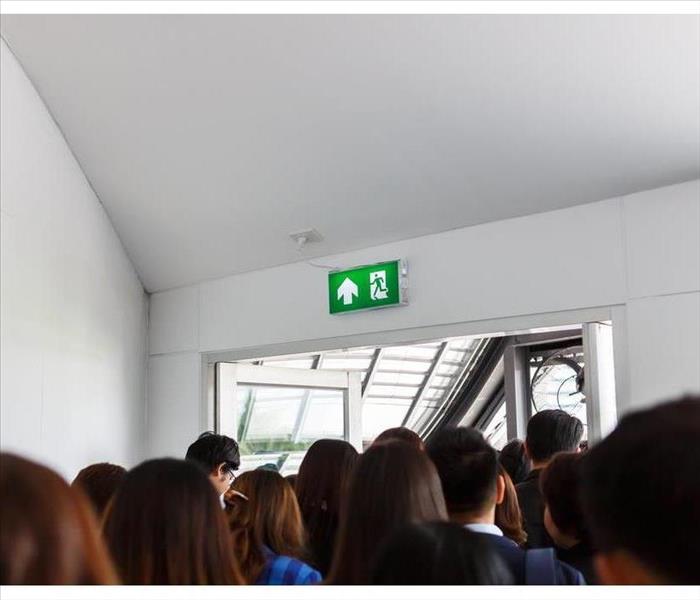 Conduct frequent drills with your employees.
Conduct frequent drills with your employees.
Steps To Develop A Fire Preparedness Plan
Every business owner in Levittown, PA, understands the importance of conducting a periodic fire drill with their employees. The more prepared your workers are, the quicker they will respond in real emergencies.
It is important to develop a comprehensive fire preparedness plan. There are several steps to consider.
1. Choose a Safety Manager
Designate a safety manager who will take the lead on developing and implementing the plan.
2. Assemble a Team
Assign a team who is responsible for determining and addressing problem areas and concerns. The team should include people from all departments to ensure all scenarios are considered. Evaluate the risks to determine which issues should be addressed first.
The team should identify the closest exits for all employees to take during the fire drill. The team must also assign persons who will account for all employees and visitors during an evacuation.
Make sure the team is aware of the fire department's contact information, as well as a fire restoration service.
3. Create a Company Safety Policy
After the general plan has been devised, create a safety policy that sums up your company's safety goals and practices. Write more specific procedures and work instructions for relevant job functions.
4. Train Employees on Safety Protocols
Develop a training program for all employees, including new employees. Make sure workers sign a training sheet indicating they understand and will abide by the rules.
5. Conduct Fire Drills
To ensure that all employees know what to do in an emergency, conduct frequent drills at first and address any issues that surface. This includes accounting for all employees in a timely manner and ensuring that there are no blocked exits.
Continue the frequent drills until you are confident all employees are following instructions. After the initial implementation stage, you can reduce the number of events.
Make sure your employees feel comfortable in emergencies by developing a fire drill program.
How To Use Landscaping for Flood Prevention
1/11/2021 (Permalink)
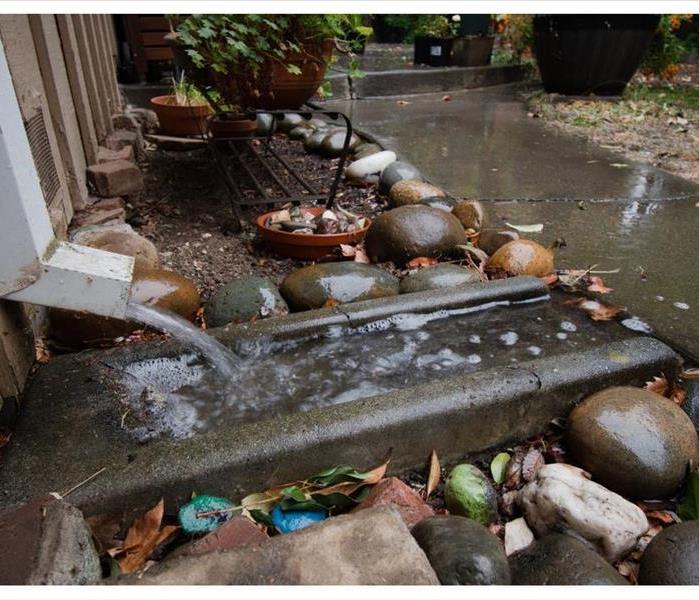 Make sure downspouts are extended to at least three feet away from your building to avoid flooding
Make sure downspouts are extended to at least three feet away from your building to avoid flooding
Four Landscaping Methods That Can Prevent Disasters From Happening
Heavy rainstorms can lead to severe flooding if your home is not landscaped strategically in Croydon Heights, PA. Outside flooding can lead to inside flooding if water seeps into your house, damaging your home and property.
1. Build a Rain Garden
Rain gardens can significantly reduce the amount of outside flooding from rain runoff by absorbing excess water into the soil. A well-designed rain garden will use native plants that low-maintenance and require little watering between rainfall. When installing your garden, place plants with a high tolerance for wet soil in the center. Water will drain from the outer edges of the garden and flow to the center before seeping into the soil.
2. Install a Downspout Diverter
Downspout diverters redirect water away from your home, often into a catchment container. Using a diverter can prevent water from collecting in areas near your home that are prone to flooding after a rain storm. This keeps water away from the sides of your house, which are common spots for standing water. If you notice water getting into the house, call a professional storm service to help with cleanup and restoration.
3. Add Driveway Drainage
Adding drainage material, such as gravel or grass, on either side of your driveway can help prevent water from running off your driveway and pooling outside your home.
4. Create Swales
Dips and depressions in landscaping, also known as swales, redirect rain drainage to areas that are more tolerant of standing water, such as a rain garden or dry well. To optimize swales and slow down the flow of runoff, use deep-rooted plants to line the slopes and place rocks along the bottom of the swale.
Landscaping is extremely useful in helping prevent outside flooding near your home. Preventing water from collecting outside of your house will lower your risk of damage and costly repairs.
4 Ways To Prevent Flooding in Towns
11/12/2020 (Permalink)
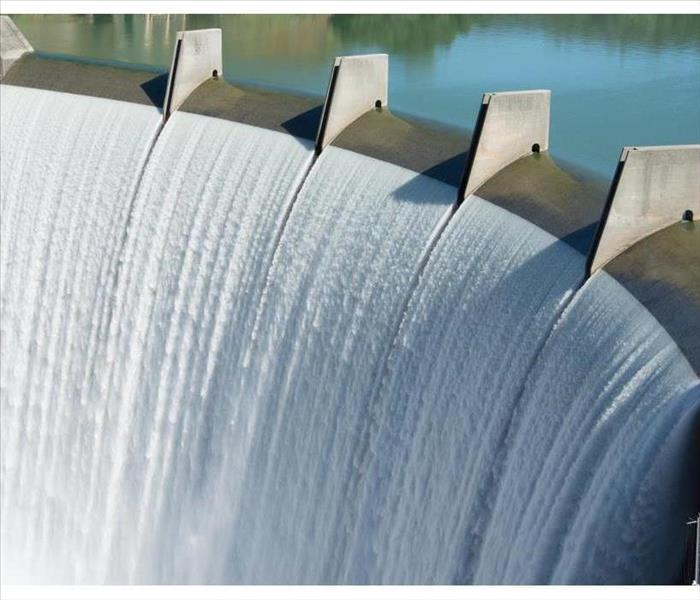 Dams can hold overflowing water during floods
Dams can hold overflowing water during floods
Here Are Four Methods For Preventing Town Floods
Spring showers and summer rains are great for gardens and lakes, but it is possible to have too much of a good thing in Dunlap, PA. Excess rain without flood prevention measures can lead to disaster and damage in any town and its buildings. Proper planning can prevent town flooding when gentle rains turn into heavy storms, causing flash flooding and storm surges.
1. Builder Permits and Town Planning
Towns should require builders to acquire a permit prior to beginning any new construction. This will avert buildings in areas that are prone to flooding. It will also ensure that waterways remain clear and unobstructed. Towns should keep drainage systems covered and free of litter and debris to keep water flowing properly and prevent blockages. Enlisting the help of commercial flood and storm cleanup services can also help with quick recovery should major flooding occur.
2. Green Space and Vegetation
Plants, such as trees, grass and bushes, can prevent water buildup by soaking up rain and breaking up the heavy flow of floodwaters, particularly in low-lying areas. Since concrete surfaces and sidewalks cannot absorb water, adding parks and open fields will assist with flood prevention by controlling water runoff.
3. Physical Barriers
In some cases, retaining walls are necessary. Dams, levees, and reservoirs hold overflowing water during floods. Tide gates and sandbags are also barriers that can be used to ward off surges and tidal waves.
4. Submersible Pumps
These pumps only require electricity to operate, and the payoff can be substantial. They work by pumping water out of flooded areas and displacing it into lakes, rivers, and floodplains. Removing the excess water is a crucial step to mitigate damage during flood cleaning.
Heavy storms and rising tides are inevitable, but proper flood prevention planning can substantially minimize the impact when these events occur. Taking the time to prepare can greatly reduce the amount of damage and disaster that occurs.
3 Tips for Making a Sewage Backup Claim
10/21/2020 (Permalink)
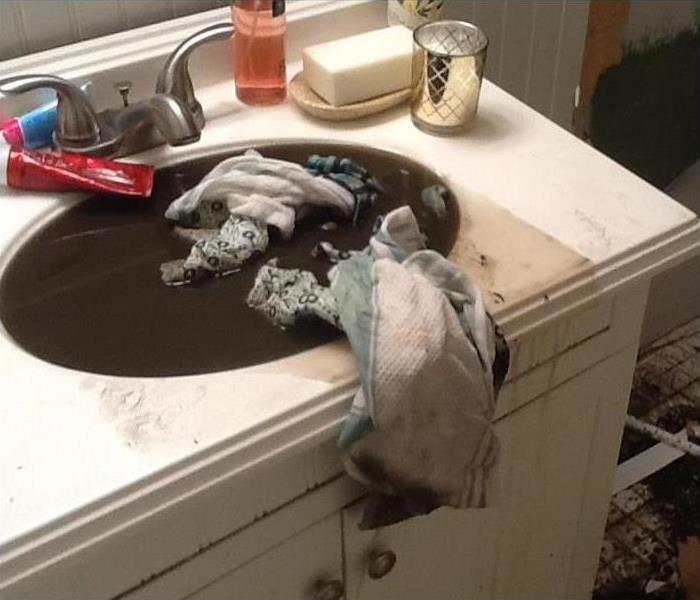 Sewage backup in Falls Township, PA
Sewage backup in Falls Township, PA
3 Tips for Making a Sewage Backup Claim
A sewer backup can result in major damage at a residence in Falls Township, PA. In addition to the extent of damage and the necessity of thorough disinfection, cleaning up this damage may be made even more complicated by the fact that many homeowners' insurance policies exclude sewer backups. Here are three tips for increasing the likelihood that a sewer-related claim will be covered by any general homeowners' insurance or sewer damage policy.
1. Document Sewer Damage
No matter the cause of damage, insurers are more likely to cover a claim that is supported with documentation. Take photos or videos of the damaged area. You may want to periodically, perhaps once or twice per year, take pictures of each part of your home. These photographs can be helpful for supporting a claim, as is proof of regular and preventative maintenance.
2. Retain Maintenance Records
Homeowners should always file away records of maintenance on a toilet, pipes and other plumbing and sewer fixtures. It’s also a good idea to regularly back up house-related files. The ability to prove that structural systems have been maintained by licensed professionals may make coverage for a sewer backup more likely.
3. Consider Backup Coverage
Carefully review the terms of a homeowners insurance policy to determine whether coverage is available for sewer backups. Many policies exclude sewer and flood cleanup. Homeowners may be able to buy back coverage for these perils through separate policies or by adding endorsements or riders to a general home insurance policy.
A sewer backup is a messy situation that calls for thorough cleaning and disinfection. If backups frequently occur in your area of Falls Township, PA, you may want to consider having backup prevention plumbing fixes installed. Investing in reducing the likelihood that a sewer will allow contaminated water to enter a residence can be more cost effective that repeatedly repairing sewer damage.
Top 5 Commercial Flood Insurance FAQs
9/2/2020 (Permalink)
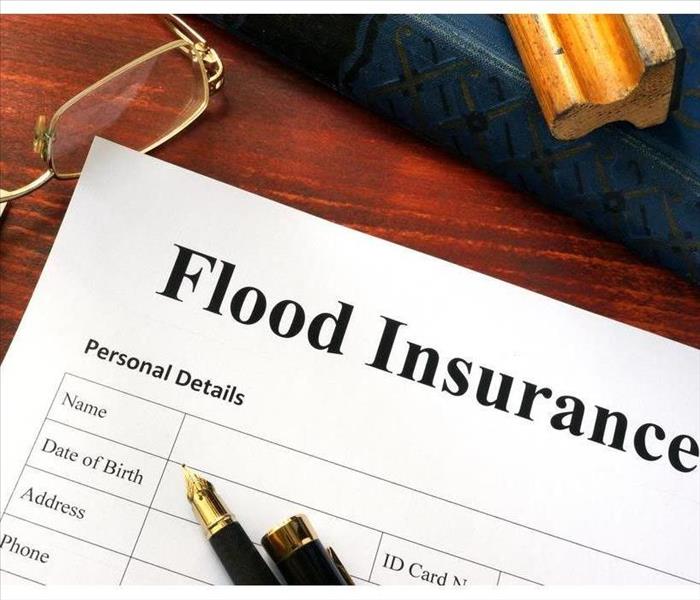 Purchase now your own flood insurance policy
Purchase now your own flood insurance policy
Study These Top 5 Insurance FAQs
Business owners need to be prepared to handle any type of emergency that they may encounter. One of the best preparedness strategies is ensuring that all of your insurance policies are up to date. While commercial property insurance may cover damage from most natural disasters, you need to purchase a separate flood insurance policy to protect against flood and water damage. Study these top 5 insurance FAQs to help guide you through the process and protect your building in Fairless Hills, PA.
1. What Type of Damage Does Flood Insurance Cover?
This insurance covers water damage caused by any type of flood. This includes overflow from nearby rivers or streams, heavy rains, broken dams, snow melt and all sorts of other scenarios. Most commercial insurance policies consider a flood to be at least two acres of water that covers two separate properties.
2. Are You Required to Purchase Insurance?
If your commercial building is located in a high-risk flood zone, then you are required to purchase the insurance.
3. How Much Coverage Money Can You Get?
Typical insurance policies grant you about $500,000 of coverage for the building, plus another $500,000 for the property inside the building.
4. Does The Insurance Kick In Immediately?
No, it does not. Most insurance policies involve a 30-day waiting period. It's vital that you purchase your insurance as soon as you can, just to be safe.
5. Does The Insurance Policy Cover Mold Damage Too?
This typically is determined on a case-by-case basis. A crew has to determine that the flood itself was responsible for the mold growth. Pre-existing mold problems are not covered.
It's incredibly important that all commercial business owners purchase a flood insurance policy, especially if their building is located in a high-risk flood zone. Water damage can often lead to subsequent issues, and you want to ensure that you aren't paying completely out of pocket to resolve these problems. Contact your local flood remediation experts for more information.
3 Factors To Consider Before Buying a House in a Flood Zone
8/13/2020 (Permalink)
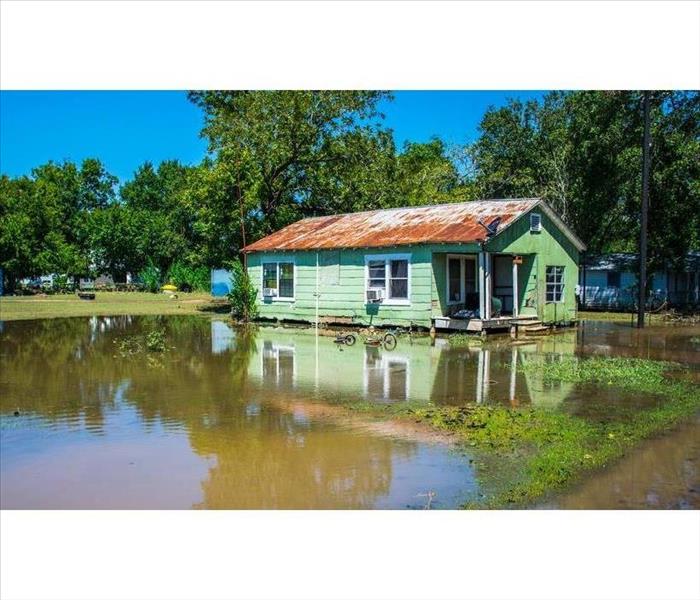 Flood zone in Dunlap, PA
Flood zone in Dunlap, PA
Consider The Following Factors Before You Close The Deal
Location plays a strong role in the crucial decision of purchasing a house. If you choose to live in Dunlap, PA, you will need to figure out if the area is labeled a flood zone, also known as an area with a strong flooding risk. Consider the following factors before you close the deal.
1. Specific Location Designation
Not all flood-risk areas are the same. The Federal Emergency Management Agency classifies locations based on the possibility and frequency of floods. Areas with lower risk are usually designated the letters B, C, and X, while the places with a higher chance are A or V. However, FEMA designations shift constantly, so you should not panic whenever there is a storm. At the same time, you should prepare even if you live in a low-probability area.
2. Flood Insurance Costs and Benefits
Selecting a house inside a flood zone carries several consequences depending on the severity of the location. Some of the aftermaths involve a higher flood insurance price. This program is usually an addition to regular insurance, but it also covers specific areas like structural and equipment damage. Some insurance companies even require it. Determine the feasibility of the cost by asking your agent for a quote before you continue.
3. Additional Preventative Measures
An insurance plan and emergency restoration services are not the only resources you have to protect your property. There are several preventative measures you can enact to reduce flood damage. Ensure the plumbing and drain systems remain unclogged and have no leaks. Seal walls and other potential openings with waterproof materials. Elevate electrical devices and valuable items to prevent further damage. Use a sump pump to divert floodwater away from the building's basement.
Choosing a new community is a major decision that involves multiple factors, including the possibility of natural disasters. If you are considering living in a flood zone, think about these aspects to make a strong decision.
What To Do Before Moving Into a Flood Zone
5/1/2020 (Permalink)
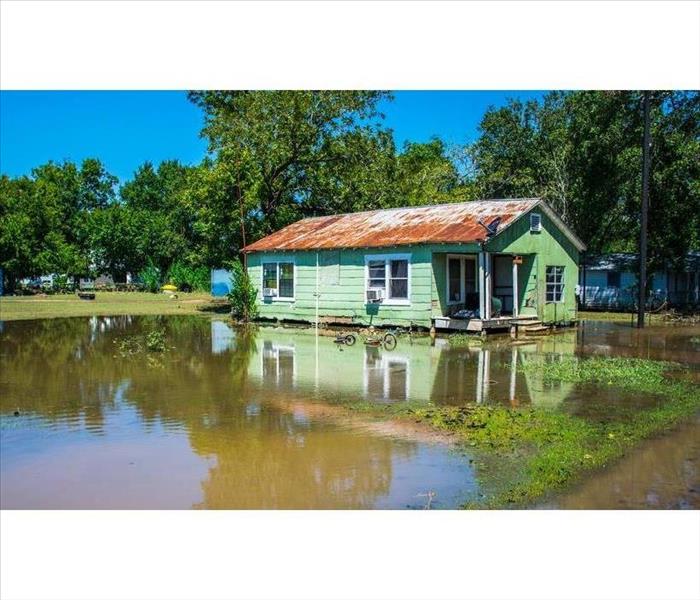 Buying a home in a flood zone can be risky
Buying a home in a flood zone can be risky
Follow These Tips to Keep the Property Protected
You have just found your dream home in Levittown, PA. Yet it happens to be in the middle of a flood zone. Don’t let that stop you from purchasing the house you always wanted. Instead, follow these tips to keep the property protected.
1. Do Your Research
Not all flood zones are created equal. FEMA often gives this designation to homes that are at a low risk of flood damage. The FEMA website will provide more information about your property's exact risk.
2. Get an Elevation Certificate
As its name implies, an elevation certificate states just how high your home is and how likely it is that floodwaters could reach that level. You can usually get one from the property seller or developer. It may also be included in the deed. This document will help you and your lender determine the inherent risks of the property.
3. Be Prepared
No matter the flood zone you are in, you should prepare for the possibility of excess water damaging your home. Put together an emergency survival kit for you and your loved ones. Each kit should include food, water, and first aid supplies for three or four days. You may also want to pack thermal blankets, ponchos, flashlights, batteries, dust masks, and sanitation bags.
Next to your emergency kits, you should store the contact information for a local storm damage restoration company. You will need to call this business if parts of your home are destroyed by a flood.
4. Stay Informed
Your home's flood risk is not set in stone. Your town could build a levee or dam to protect properties from flooding. Some other factors may also increase the likelihood of flood damage. Keep up with the news so you know the odds of floodwaters harming your house.
Buying a home in a flood zone can be risky. However, you can mitigate this risk by doing your research, obtaining an elevation certificate, and preparing for the worst-case scenario.
5 Storm Preparation Tips To Help your Business
4/10/2020 (Permalink)
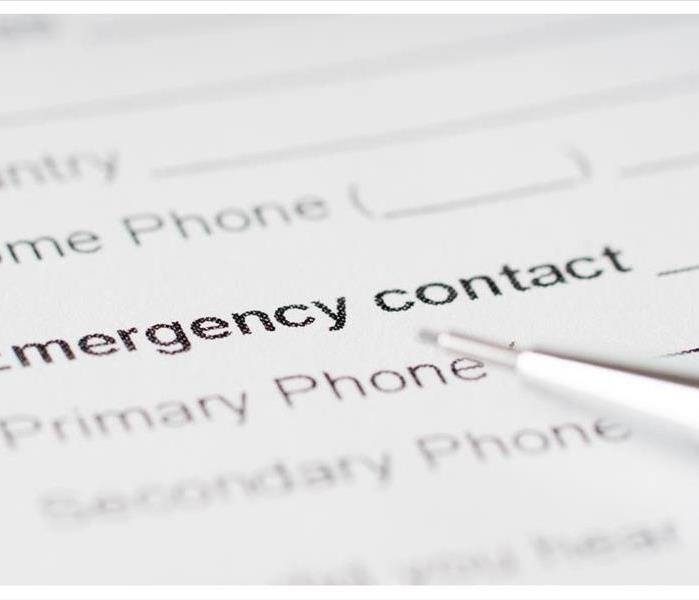 Keep important numbers handy
Keep important numbers handy
Here Are Five Tips To Consider
Having a business in Dunlap, PA may mean you want to have a disaster preparedness plan in case a storm should arrive. Knowing ahead of time how to mitigate potential damage to the business property can help save you time and money by preventing possibly costly repairs. Here are five tips to consider.
1. Keep Important Numbers Handy
When preparing for a storm you may want to collect numbers you may need to access quickly and keep them in an easy to access location. These numbers can include emergency numbers, your insurance agent, and the number of a local storm damage restoration service who can help with cleanup and repairs after the storm has passed.
2. Be Aware of the Weather
It’s also important to stay aware of the weather in your area. This will allow you the time you may need to check the property over and take necessary mitigation steps before a storm arrives.
3. Check All Drainage Systems
Checking drainage systems is also important for disaster preparedness. Clogged drainage cam overflow and flood nearby areas of the property. This is especially risky with gutters which could cause problems with the roof. Before a storm, it’s best to clear all drainage areas of debris which could cause these problems.
4. Back Up Data
Backing up computer data is another step you can take to protect your business. During a storm power outages, or flooding could occur which could affect any electronics and cause data loss.
5. Prepare Landscaping
Another step for business preparedness is to keep an eye on the landscaping. Keep it clear of any debris, such as loose branches, which can be tossed around by the storm and damage the building. It’s also a good idea to bring lawn furniture inside.
When preparing a disaster preparedness plan try to include any important numbers you may need to access quickly in case of damage. Also, stay away from any severe weather in your area, keep drainage systems clear of debris, back up computer data, and clean any potentially hazardous landscaping. These five things may help prevent damage to your property.
4 Types of Damage Caused By a Winter Storm
11/15/2019 (Permalink)
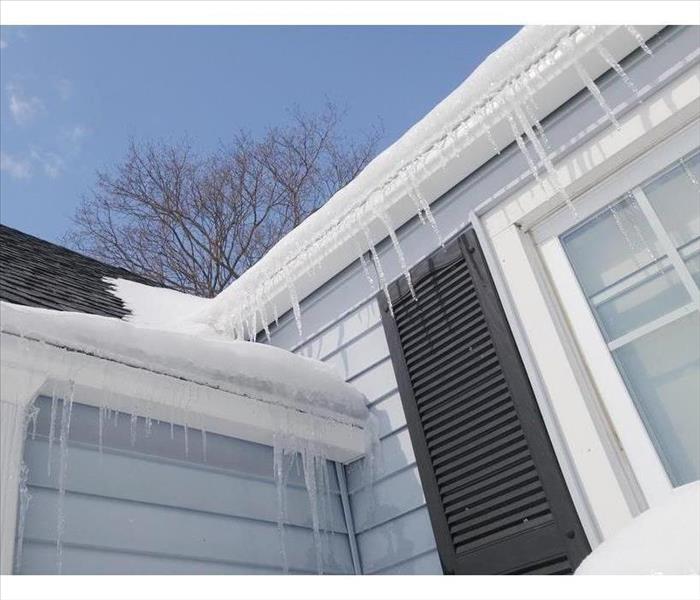 Snow that accumulates on your roof can create an ice dam
Snow that accumulates on your roof can create an ice dam
Prepare Your Home For Severe Weather
A winter storm in Tullytown, PA, can cause a lot of damage to your house, sometimes in ways that you may not expect. Because of this, it is important to prepare your home for severe weather. The following are some ways that your home could be affected.
1. Frozen Pipes
If the temperature drops during a winter storm, then you could end up with frozen pipes. This can make it difficult to use your plumbing and can result in cracked or broken pipes. If this happens, water could flood your house. To prevent this, keep your home heated and insulate any exposed pipes. Open any cabinets with pipes inside to allow the air to circulate.
2. Ice Dams
Snow that accumulates on your roof can create an ice dam that can cause water to back up and leak into your home. If it persists, mold can grow and materials may need to be replaced. An ice dam can happen when snow melts and then refreezes into ice, so one way to prevent it from forming is to keep your attic at a cool temperature.
3. Exterior Damage
Heavy winds during a blizzard can cause loose shingles to detach from your roof. They can also pick up debris or light objects from the ground and cause them to hit the exterior of your home. This can damage siding and shatter windows. Having existing damage repaired before a storm can prevent it from getting worse. You should also trim tree branches and clean up the yard.
4. Collapsed Roofing
Large amounts of snow and ice on your roof can become heavy. This can cause roof damage and may even cause it to collapse. Be sure to clear your roof regularly to keep this from happening.
If your home has been damaged during a winter storm, then an emergency cleanup and restoration service can help return it to its previous condition. Whether you are dealing with broken pipes, leaks or something else, they can make any necessary repairs and have your home looking great again in no time.
Beware of Mold After Flooding
10/28/2019 (Permalink)
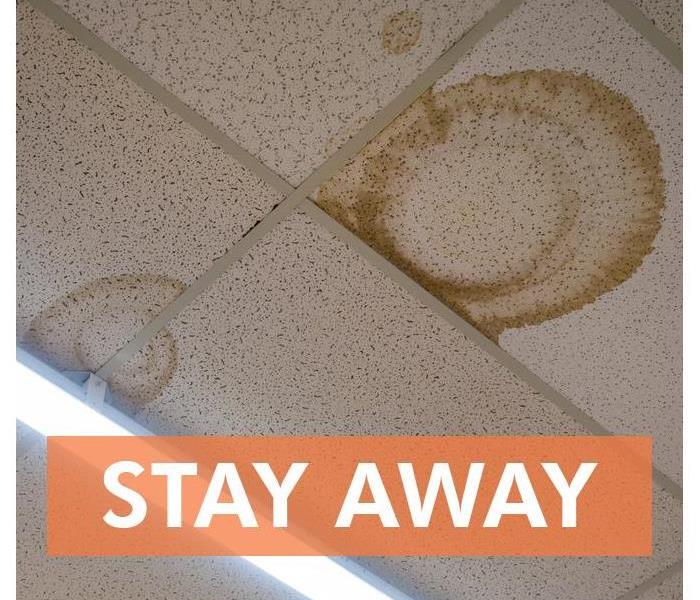 Porous materials, such as commercial ceiling tiles and carpet, may have to be thrown away if they become moldy.
Porous materials, such as commercial ceiling tiles and carpet, may have to be thrown away if they become moldy.
When flooding happens in Bristol, PA, the water itself isn’t the only thing that can cause damage to your business. After the standing water subsides, it’s common for bacteria to be left behind and the right conditions to form for mold growth. Calling in an expert for quick mitigation and cleanup is imperative to further damage from happening.
Mold Grows Fast
If the conditions are right, the spores already floating in the air will take root and begin to start growing within 48 hours. After a flood, these microorganisms have everything they need to flourish: moisture, warm temperatures and food. Their sustenance is bountiful in your business. Mold thrives on various materials including:
- Natural fibers like cotton or wool
- Paper
- Wood
- Leather
- Surfaces with organic material such as grease, food or dirt
- Organic porous materials, including carpet, drywall, padding, furniture and fabrics
After the Flood
Preventing mold growth is always the best route to take. When the unexpected happens, taking quick action can reduce the chances of an extensive breakout. After the flood, the following can help reduce mold damage.
If the humidity levels are lower outside, open windows and doors to air out the building.
Remove any wet items. This includes furniture, papers and other belongings.
Clean up any standing water using a wet vacuum, which includes saturated carpets.
Use fans and dehumidifiers to help dry things out, as well as eliminate evaporation.
Use a disinfectant to clean any exposed surfaces.
Additionally, porous materials with extensive saturation will need to be discarded. This may include sections of drywall, carpeting and ceiling tiles. Even if it doesn’t seem like the flood waters reached very high, water quickly wicks up and could be hiding the perfect environment for mold.
A flood itself requires significant attention. When it's finally over, the last thing you want is lingering mold growth as a reminder. When it comes to mold cleanup, count on professional to eradicate the problem and make it Like it never even happened.
4 Tips For Preventing a Sewage Backup
9/30/2019 (Permalink)
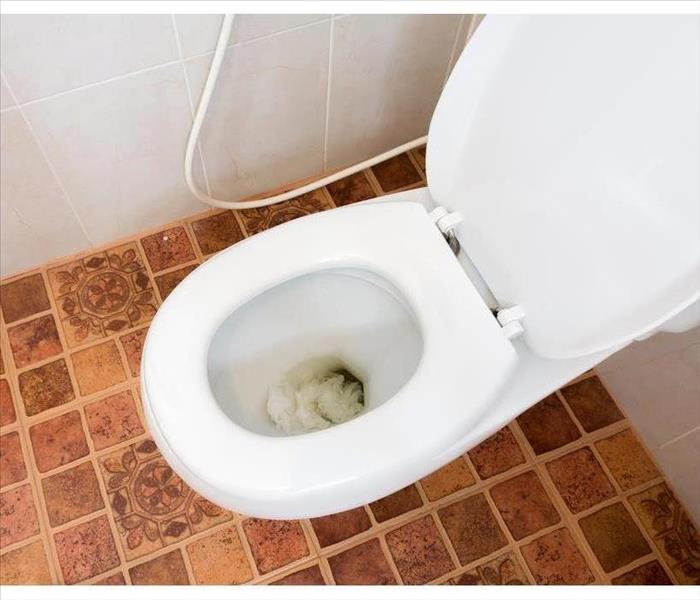 Clogged toilet in a Bristol, PA home
Clogged toilet in a Bristol, PA home
4 Tips For Preventing a Sewage Backup
Nobody wants to deal with sewage backup. It’s unsanitary, it has a bad odor and it can cause damage to your house. Luckily, there are some steps that you can take to make this occurrence less likely. To prevent this problem in your Bristol, PA, home, use the following tips.
1. Replace Old Plumbing
While things like storm damage can cause problems for your plumbing, sometimes the issue is much simpler. Your pipes are made to last for a long time, but they cannot last forever. Over time, both plastic and metal pipes begin to break down and can cause damage as a result. Be sure to replace your pipes when necessary to avoid this.
2. Trim Tree Roots
You might not consider that your plants could cause a backup, but overgrown roots can be a real problem. Drawn to the moisture that the pipes carry, roots can sometimes begin to grow into small cracks or joints in your pipes. Eventually, this can cause a lot of damage.
3. Be Careful What You Put Down the Drain
Another common problem for homeowners is that they don’t dispose of certain items in the correct way. You might not think much of pouring leftover grease down the sink or flushing paper towels down the toilet, but this can cause blockages that clog your pipes. When this happens, water cannot flow properly and you may end up with overflows and flooding.
4. Perform Regular Maintenance
In order to keep your pipes working well, you should have them maintained regularly. Make sure that there are no cracks or rusting that could result in a burst pipe. Perform sewer cleaning as well to prevent clogged pipes.
Keeping these tips in mind can help you prevent a backup in your house, but sometimes you may experience damage that is out of your control. If this happens, a cleanup and restoration service can perform repairs to get your home looking great again.
How To Maintain Your Commercial Building’s Roof
8/22/2019 (Permalink)
Avoid Roof Damage With The Following 3 Roof Maintenance Tips
When it comes to managing a commercial property in Pinewood,PA, exterior maintenance is often just as important as interior maintenance. A poorly maintained roof can cause leaks that may eventually damage ceilings, walls and more. To avoid roof damage and all that comes with it, check out these three roof maintenance tips.
1. Keep It Clean
As leaves and other forms of debris pile up on the roof, they begin to store water and rot the materials underneath. Over time, this can weaken the entire roofing structure, including vital support beams. Thus, it is important to keep leaves, plants and dirt from landing on your roof. Trim any nearby tree branches to keep the leaves away. Trimming overhanging trees is a also a good idea in case heavy branches fall off during a storm.
2. Check the Shingles
One of the most common types of wind damage is the loss of roofing shingles. If your building has a shingle roof, have the condition of the shingles checked at least once a year or after a severe storm. Even one missing shingle might cause a roof leak, especially if the detached shingle covered a seam in the two underlying shingles. Having a regular inspection helps you identify roof damage so you can attend to it before it becomes a problem.
3. Waterproof
Adding a waterproof layer may come in handy in the event of a strong rainstorm, particularly if you have a flat roof that is prone to pooling water. There are various types of waterproofing solutions on the market. Many protective coatings even perform double duty, shielding against roof damage caused by rain as well as harsh sunlight. Waterproofing your roof can save money on utility bills by keeping the roof cooler in the summer and preventing the loss of interior heat in the winter.
Should serious storm damage happen on your commercial property in Pinewood,PA, contact storm cleanup professionals immediately. They will cover the ruined portion of the roof with a tarp to prevent further structural degradation during the roof rebuild. After the restoration is complete, be sure to take preventative measures to guard against future damage.
3 Tips for Shielding Your Home Against a Flood
7/10/2019 (Permalink)
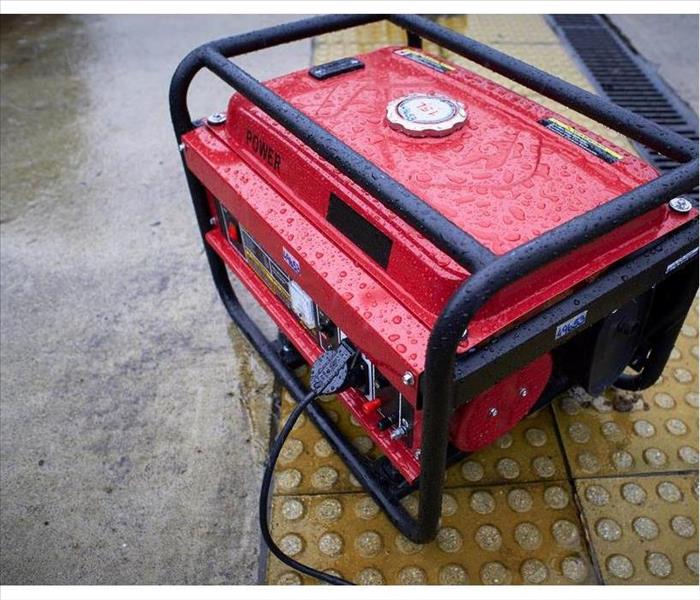 Move outdoor equipment this includes a power generator
Move outdoor equipment this includes a power generator
Ways to Keep Your Living Space Shielded Against Flooding
When stormy weather threatens to damage your home in Croydon Heights,PA, protecting it from potential flooding is vital. There are a number of simple flood safety tips you should follow in order to ensure that your home remains safe during harmful weather. Here are some ways you can keep your living space shielded against flooding.
1. Move Outdoor Equipment
All of your outdoor equipment should be placed above flood level to ensure that it remains protected. This includes any of the following items:
- Air conditioning units
- Fuel tanks
- Generators
- Supply lines
If these objects are not moved so that they are safely above flood level, they are at risk of being damaged. Be sure to elevate your outdoor equipment if you are expecting rainy or stormy weather.
2. Install a Backflow Valve
In the event of a flood, it is also important to take care of your sewage system. If a sewage system becomes flooded, it can lead to a sewage backup in your home. An effective way to prevent sewage from backing up is to install a backflow valve. For maximum flood safety, these valves should be installed on each pipe that reaches toward your home.
3. Guard Your Furniture
Any furniture that is located on the ground floor of your home should be moved upstairs or at least elevated. This can prevent it from becoming submerged in water and severely damaged as a result. To keep your furniture flood proof, clean out your gutters and drains to keep excess water from seeping into your house.
If your home is at risk of flooding, taking the right precautions is crucial. In the event that your living space becomes damaged as a result of a flood, don’t wait to call for help. Contact emergency restoration services to bring your home back to its normal condition. Immediate action and flood safety guidelines are key when dealing with flood damage.
How To Minimize the Flood Risk of a Business
5/8/2019 (Permalink)
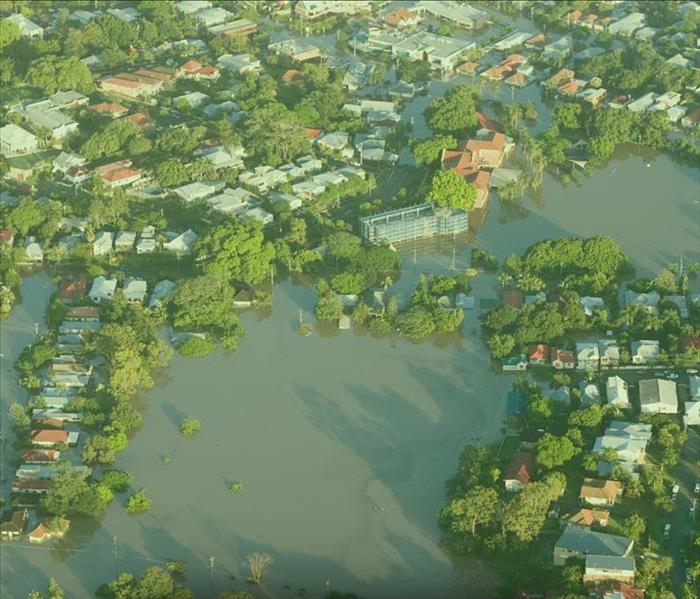 Flood damage in Levittown, PA area
Flood damage in Levittown, PA area
3 Ways to Reduce the Risk Posed by Flooding
Many businesses and commercial properties run some risk of flood damage. It is important for a building owner to make sure that flood insurance coverage is available, as most standard commercial property insurance policies exclude this peril. Here are three ways for the owners of businesses and buildings to reduce the risk posed by flooding in Levittown, PA.
1. Obtain Flood Coverage
Commercial properties located in flood zones or on flood plains may be required to maintain flood insurance. This additional commercial insurance policy is also advisable for businesses and buildings with an elevated risk of flooding from any source. Damage mitigation and restoration costs can add up to tens of thousands of dollars and this coverage can reduce the amount that a building owner will need to pay out of pocket.
2. Maintain the Structure and Grounds
Maintaining a structure and modifying the surrounding landscape may reduce the likelihood that a structure will flood. A drainage system with clear drains, downspouts and gutters and a working sump pump are effective ways to manage two of the most common flood risks. Grading and rain gardens can direct water away from the foundation of a structure and help to manage run off.
3. Invest In Reusable Sandbag Alternatives
A number of sandbag alternatives are available to enable building and business owners to affordably and easily keep flood water from breaching a building and causing damage. Barrier designs include water-filled cofferdams, modular designs and self-supporting fencing and range in durability and price.
These are three ways to reduce the risk of flooding at a commercial property in Levittown, PA. If flood damage occurs, it may be possible to recoup losses and pay for damage restoration by making a flood insurance claim. All of these measures may increase the likelihood that a claim will be settled quickly and cover most of the damage.
After the Flood: 3 Content Cleaning Tips
4/25/2019 (Permalink)
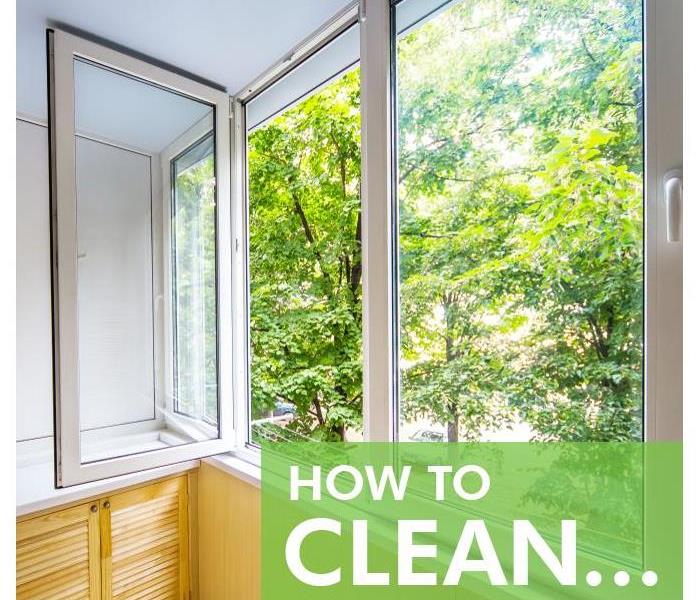 Open your windows, this can help reduce humidity
Open your windows, this can help reduce humidity
Flooding can cause serious damage to your Croydon Heights, PA, home and its contents. After a flood, it can be difficult to know how to salvage items such as photo albums, important documents and your children’s toys. Knowing how to restore these belongings and what is safe to keep for content cleaning can help you save time and money, both of which might be in short supply after serious flooding.
1. Retrieve Items in Safe Areas Only
Not all types of floods are the same, and the grade of water can have a significant impact on your belongings. For example, Flooding caused by a broken sink pipe in your kitchen may be less damaging than one that originated from a broken sewer or flooded toilet. Category 3, or black water, is usually the result of such floods, which may make items more difficult to sanitize and restore. As such, it is wise to avoid retrieving any belongings that have been soaked by contaminated flood water.
2. Lower Humidity in Affected Areas
After flooding, indoor humidity levels can rise considerably. This can affect important paper documents, books, and photographs. To prevent curling and warping of paper products, turn off your home’s ventilation systems, open the windows and turn on floor and ceiling fans. This can help reduce humidity until you are able to move these items to a safer area.
3. Ask a Flood Damage Service for Advice
Calling in a flood damage and restoration service to help you with content cleaning may help you feel more confident about the choices you make regarding your damaged items. For example, flood technicians can help you understand the difference between porous items, such as plastic toys and fabrics, and non-porous belongings, like those that are made of metal or glass. Porous items may have to be discarded if they were soaked with contaminated flood water.
Content cleaning can be challenging after flooding affects your Croydon Heights,PA, home. Understanding how certain types of floods might affect your belongings can help you make the best decisions possible when it comes to salvaging them.
5 Tips for Deducting Storm Damage on Your Taxes
2/12/2019 (Permalink)
 Deducting Storm Damage on Your Taxes
Deducting Storm Damage on Your Taxes
Deducting Casualty Losses
If you’ve experienced damage to your business in Fairless Hills,PA , due to a flood, hail, wind, hurricane, or other natural disaster and insurance wouldn’t cover you for whatever reason, your company is likely in a rough spot financially. Fortunately, storm damage that isn’t covered by insurance can often be deducted on your next tax return as a casualty loss. Here are five tips to keep in mind when deducting casualty losses.
1. You Will Need To Prove You Experienced a Loss
In order to be qualified to claim casualty loss as a tax deductible, you will need to prove that you are the owner of the property and the one experiencing loss. You will also need to prove the value of the property before the disaster and show you are unable to cover the costs.
2. Special Rules Apply to Presidentially Declared Disasters
If the president declared a disaster in your area, you can deduct the losses due to storm damage for either the year the disaster occurred or the year after- whichever saves you the most money.
3. There are Different Rules for Deducting Casualty Losses for Personal Property and Businesses
While personal property damage only allows you to take a write off for itemizers and requires you to reduce the loss by $100 and 10 percent of your AGI, this does not apply to business casualty losses.
4. Wear and Tear Is Not Considered Casualty Loss
Since a casualty loss is defined as a loss that occurred due to an unexpected or sudden event, normal wear and tear that occurs to your business will not be tax deductible. However, work done by a storm damage restoration company as a result of an unexpected disaster would be covered.
Although a natural disaster of any sort can be extremely difficult for your business to recover from, it helps to know a lot of your losses are tax deductible. When filling out this year’s tax refund, remember these four tips!
Flood Damage Services
11/20/2018 (Permalink)
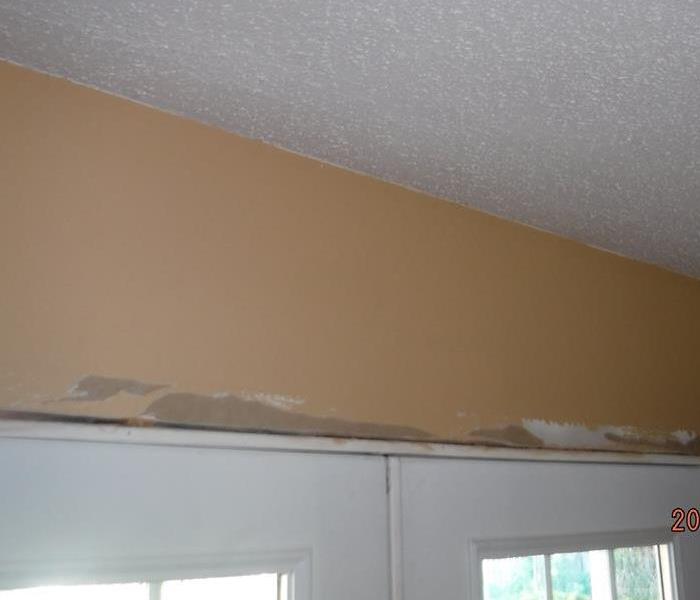 Water Damage from storm rain and water leaking through the roof and doors.
Water Damage from storm rain and water leaking through the roof and doors.
SERVPRO of Levittown Offers Flood Damage Services in Croydon
The last thing you want to see as a homeowner is standing water in your home, but some residents will unfortunately experience Croydon flood damage at some point. You may wonder how you will ever get all of the water out of your home. You may also think about the damage that will be left behind after the water is removed from your home. These are common concerns, and they can be dealt with through professional water remediation services.
The Damage Caused by Water in the Home
Water damage is, unfortunately, common, and it can be caused by a heavy rainstorm with torrential downpours, rising river or creek levels forcing groundwater into your house, a broken pipe or some other events that occur on the property. While there are many causes, the damage is very similar. Croydon flood damage can cause everything from warped drywall, wooden flooring, and wood furnishings to stained floors, foul odors and even mold growth. Dealing effectively with the water damage is important if you want your home restored to its former condition.
How to Deal With Water Damage
Croydon flood damage can be disastrous for you to deal with, especially if it causes you to evacuate your home or close your business. The good news is that you do not need to deal with flood damage on your own. Professional remediation services are available to extract standing water from your home and dry out the air so that the humidity level returns to normal. Rehabilitation services may also include stain and odor removal, professional carpet cleaning and more. Your primary goal is to improve the property so that it looks and smells like it did before the flood occurred. The clean up and sanitizing, especially after groundwater intrusion, is crucial to the restoration of a healthy and safe preloss environment. SERVPRO has the expertise and physical resources to accomplish these needed services. This can be difficult to do on your own especially when time is of the essence, so professional services are in your best interest.
At SERVPRO of Levittown, we are a locally owned company that is committed to your satisfaction with all aspects of our water restoration services. We know what it takes to improve your property after a flood event. The aftermath of a flood can be daunting, contact our office today at (215) 785-1777 for more information or 24/7 emergency service.
4 Storm Preparation Tips That Will Help Your Business Survive a Storm
10/1/2018 (Permalink)
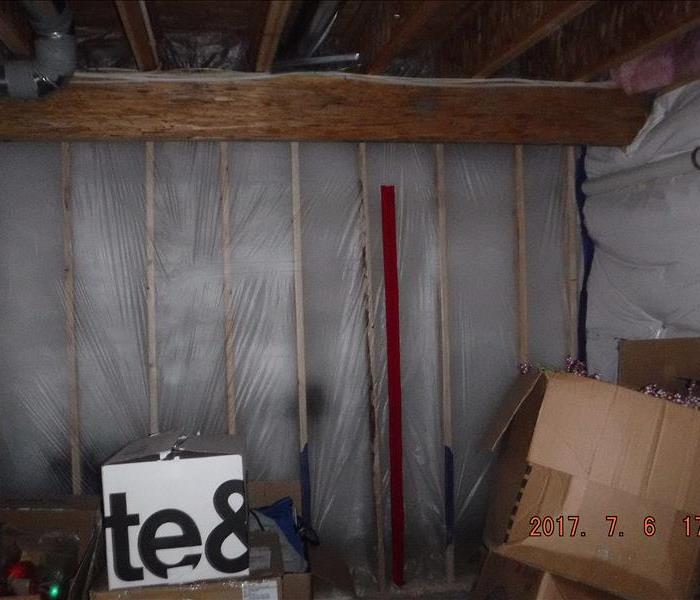 Flooded home in Levittown.
Flooded home in Levittown.
Storm preparation is vital for any company. A flooded building can disrupt business and stop an inflow of income. Along with that, flood water can cause a lot of damage and may require restoration services. Here are a few ways you can prepare your building to reduce risks of flooding and save money.
1. Back Up All Critical Information
If important documents or technology get ruined in a storm, this information may be gone forever. Back up anything important on hard drives and have copies of documents in a secure location. That way, once the aftermath has cleared, your company can continue to run smoothly.
2. Consider Flood Insurance
Whether you are in a mapped flood zone or not, it’s a good idea to have flood insurance. Flood water in the building can completely disrupt business if one affects your building. This can help you cover restoration expenses as well as business and employee costs.
3. Have Emergency Kits Ready
The most important part of your business is your employees. Have emergency kits ready for any disaster. A few important emergency kit supplies include the following:
• Enough water to last 24 hours
• Flashlights
• First-Aid kits
• Batteries
• Non-perishable food
If a disaster does occur, you can be confident that your employees will be taken care of.
4. Waterproof Your Building
If your business in Levittown, is based in an old or leaky building, consider doing any repairs that might stop water from entering the building. Caulk any cracks, install a drainage system, and add waterproof sealant to anything that might result in a leak.
Although you may never deal with flood water in your commercial building, it doesn’t hurt to take precautions to reduce the water damage if a flood were to occur. If a severe storm does affect your business, take care of your employees and call in restoration services quickly. Once everything is repaired and secured, your business can start up again.
Which Storm Shutters Are Best for You?
9/16/2018 (Permalink)
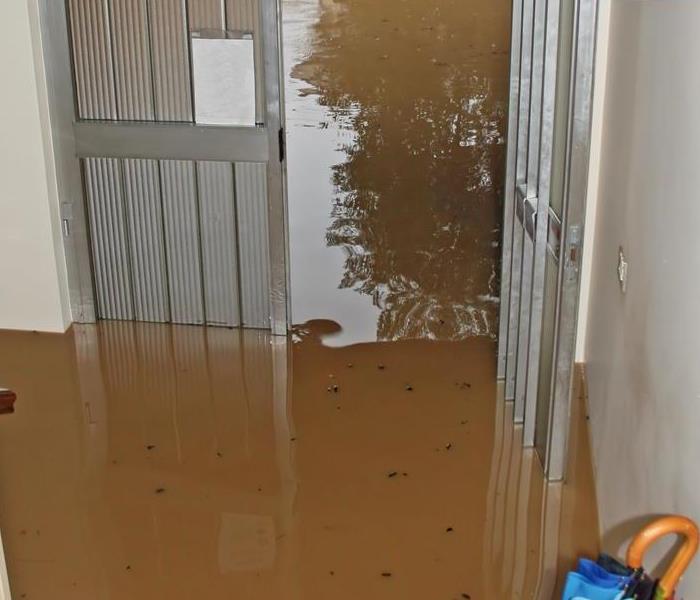 Protecting your home from storm damage is important to stop the water from entering your home
Protecting your home from storm damage is important to stop the water from entering your home
If you live in Levittown, PA, you may need to protect your home from the high winds associated with tropical storms and hurricanes. Most storm damage comes from wind getting in your house through the windows and doors, then wreaking havoc from the inside out.
Storm shutters shield glass from high winds and debris. They come in many different styles, each with its own merits. Here is a guide that can help you choose the best type based on your needs:
1. Your primary need is ease of use. You want protection that can be activated quickly and without a lot of labor. Roll-down shutters are the best option for this need, but they are pricey. They are permanently and inconspicuously attached to the top of your windows where they can be operated by a single person using a motor or crank.
2. You want protection that looks nice. Bahama and colonial styles are accessible and functional. These attach to your home’s exterior and add architectural style while being ready to close for storms. They are not as costly as roll-down styles and not as labor intensive as installing corrugated panels each time it storms.
3. You appreciate the lowest price. You are willing to trade some hard work to get quality materials at a lower price. Sturdy corrugated panels are labor intensive since they must be brought out of storage, sorted, overlapped and attached with many bolts each time you need them. For a little more money, accordion style shutters can be permanently attached in special housing next to each window, making it easy enough for one person to close them. Accordion styles are more expensive than corrugated panels and less expensive than the decorative options.
Storm shutters can prevent a lot of unnecessary damage from high winds and storms, but nobody can stop the storm from happening. At least you can rely on storm mitigation professionals to help get your home back to normal after a storm.
For more on Levittown click here.
Can Odors After Flooding Be Removed?
9/4/2018 (Permalink)
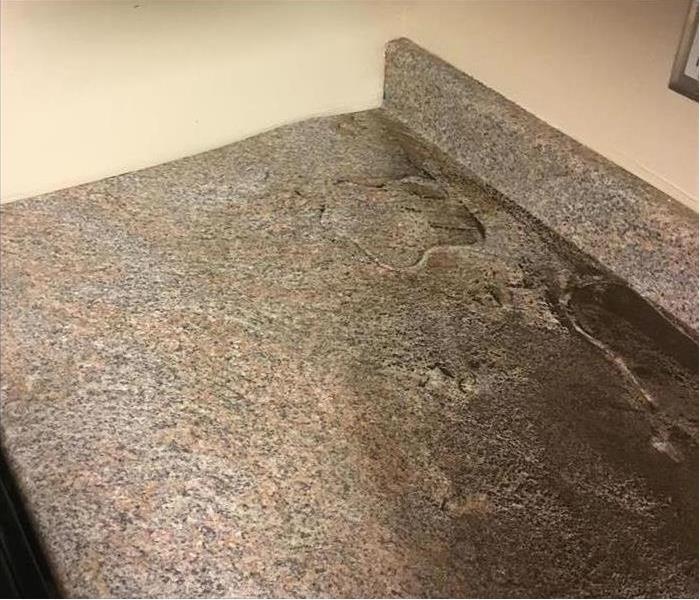 Sewer backup on a counter of a home in Bristol, PA
Sewer backup on a counter of a home in Bristol, PA
Have you noticed a strong odor coming from your commercial building in Bristol, PA, after it was affected by flooding caused by a storm? Bad smells can be associated with sewage backup and mold growth. Thankfully, a commercial odor removal team can help you get your property back to its former glory. The path to an odor-free building may be different depending on the cause of the smell.
Sewer Smells
Sewage loss can cause your entire building to smell like the sewer. This strong smell can drive away customers and make it hard for your employees to go to work. Removing this type of strong odor may require a vigorous cleaning process that includes the following steps:
- Removing standing water.
- Throwing away items touched by the sewage.
- Ripping out flooring, fixtures and walls.
- Cleaning remaining surfaces.
- Replacing any items that had to be discarded.
Your cleanup crew may also use a deodorizing agent to get rid of the unappetizing smell. However, this deodorizer is only helpful after the source of the smell has been cleaned.
Musty Aromas
Flood water can also cause mold to start to grow in your commercial space. This is especially true for floods caused by rain water and sewage backup. The smell of mold growth can only be removed by getting to the source of the problem. You can try to cover up the aroma, but it will likely keep coming back unless you completely remove the growth. A mold remediation crew can find the fungus colony, remove it and fix the moisture problems that allow it to thrive. Once these steps are completed, your commercial space may start to smell normal again.
No one wants to walk into a commercial building to smell the unmistakable odor of mold growth or sewage backup. Removing these smells from your space requires a serious cleaning, disinfecting and restoring of the property. If you skip any of the necessary steps, the odor may resurface when the problem returns.
Dealing With Bad Weather: Here Is What You Need To Know
6/15/2018 (Permalink)
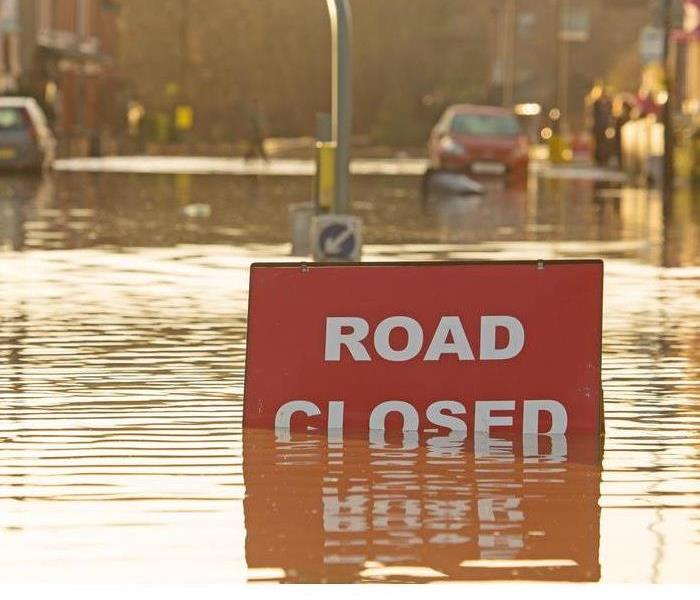 Give SERVPRO a call after storm damage.
Give SERVPRO a call after storm damage.
When you own a business, you no longer have to care about just yourself and your family; you must also look out for your employees, your customers and even your building. The best way to keep all people and structures safe during a snow storm or other disaster is to be prepared. There are a few things you can do to prepare for and act when the weather turns bad:
• Assess your risk.
• Allow employees to work from home.
• Devise a company-wide production plan.
• Watch the weather.
Know Your Risk
The best way to plan for heavy storms is to understand the weather patterns of your region. Though a bad storm can strike anywhere temperatures are adverse enough, if you live in an area prone to adverse weather, begin to prepare right before the bad weather hits. Hire a management company, make sure you have enough salt on hand to keep paths clear, and make sure that all drainage pipe are maintained to prevent flooding.
Allow Employees To Work From Home
Continue operations as usual no matter the weather by allowing employees to work from home. Devise a company-wide plan that employees can refer to when the weather turns bad. The plan may indicate when employees should stay home and how much of and what type of work is expected of them while they're away from the office. Bear in mind that employees with kids may not be able to work and watch their children at the same time. (After all, if the roads are bad, schools are likely closed as well). Make allowances for parents of young children.
Watch the Weather
During seasons of extreme weather, keep an eye on the forecast. If a storm is brewing and forecasted to hit before the workday is up, allow workers to leave early. This will ensure that everyone makes it home safely.
For more tips on how to prepare for a snow storm and other extreme weather, reach out to your Levittown, PA storm preparation committee. However, knowing your risk, having a plan in place and watching the weather should help you prevent unnecessary injuries and continue operating as usual. Visit http://www.SERVPROlevittown.com for more information on storm damage.
How To Maintain Your Sump Pump (and Why You Should)
4/23/2018 (Permalink)
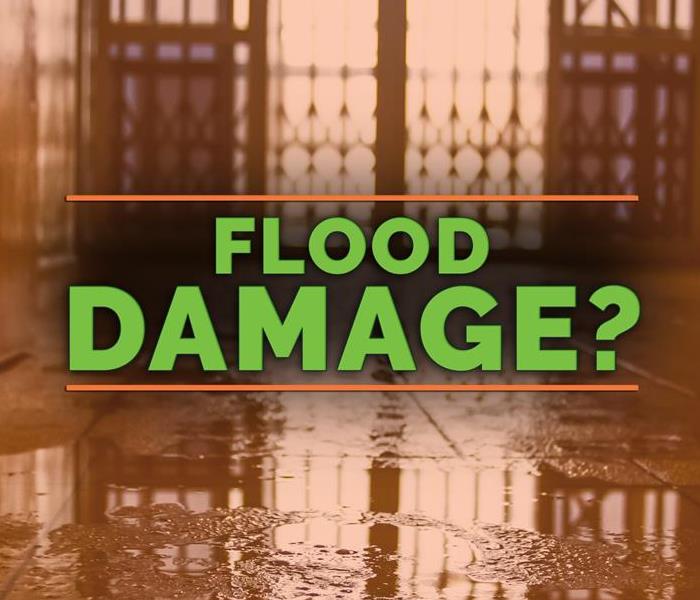 SERVPRO has technicians available 24/7 in case of flooding or storm damage.
SERVPRO has technicians available 24/7 in case of flooding or storm damage.
The sump pump in your home works hard, but it rarely gets the attention or credit it deserves. Your pump is one of the few components of your home that prevents floods and protects your house from water damage. If your pump stops working, the basement and ground levels may flood in a heavy rain. For this reason, pump maintenance is a must. There are a few things you can do to keep your pump in good working order:
• Inspect the cord for any wear and tear.
• Make sure the pump is upright and level, otherwise the float will shift out of place
• Test your pump by filling the basin to the top with water
• Clean the grate that is at the bottom of the pump
• Check the drainage pipes to the pump to make sure all connections are secure and that water drains directly to your yard
By doing these simple things, you can prevent unnecessary flooding and minimize water damage. If your sump pump isn’t functioning correctly, you may notice the following signs:
Strange Noises
If your pump has gone bad, you may notice that it makes abnormal noises, such as thudding, grinding or groaning. If you hear these sounds coming from your basement, it may be because your pump has gone bad.
On/Off
If your pump turns on and off at whim, it may be because of lack of maintenance. In the best-case scenarios, simply tilting your pump upright or adjusting the power source can fix the issue. In the worst-case scenario, you need a new pump.
Constant Running
If your pump is always running and it’s not raining out, chances are that it’s broken. If this is the case, you may want to consider replacing it.
Flooding
If your basement floods in a heavy rain, it may be because your pump is broken or needs to be tilted, cleaned or reconnected to the draining pipes. If none of those fixes work, you may need to replace the whole pump.
Sump pump maintenance can keep your basement clear in light to heavy rains, but it may not protect against extreme flooding. If flooding does occur, reach out to the Levittown, PA water remediation team for immediate assistance. Visit http://www.SERVPROlevittown.com for more information on storm damage.
Prompt Storm Damage Restoration
10/31/2017 (Permalink)
Prompt Storm Damage Restoration
If you're dealing with flood, storm damage, hurricane damage, hail damage, roof leak, river flooding or any other home damage issue, it is extremely important to get in touch with a storm restoration company right away, for storm remediation. These situations can lead to additional damage if not resolved promptly.
Restoration professionals have the right training and knowledge to deal with the damages caused by storm, flooding and other natural disasters and they can respond promptly to provide the necessary repairs, including ice dam installation, emergency roof repair, roof leak and using flood pump to get rid of ground water and flooding. The cost of restoration service depends on the extent of the damage or amount of work involved.
Home restoration companies have professionals who handle roof damage issues and roof repair, hurricane damage, or ground water due to flood or river flooding. Water restoration professionals also deal with flood water, ground water, ice dam, ice damage, frozen pipes and ice damming.
Flood water is another issue that need to be left to the professionals. If your home is vulnerable to flood water or flooding, a storm restoration professional can help you with the removal by using their special equipment, including flood pump.
Flood can create huge problems for home owners. Homes are exposed to a vast range of risks when a storm hits. Such risks involve ice damage, hurricane damage, storm damage, wind damage, and frozen pipes. River flooding causes the storm water to flow into homes and other residential areas. River flooding can also result in contamination.
Protect your property from damage. Professionals may also protect your home from flood or flood water by installing the backflow preventers and widening the channels. To protect your electrical installations and electronics from flood, make sure you raise them above the flood levels.
Home restoration or water restoration professionals also use equipment such as flood pump in getting rid of ground water, flood water and they also address other problems caused by flooding or river flooding. Flood pump has proven to be very effective but its use in dealing with flood is best left to the experts.
If your home is hit by sever storm, the hail damage and frozen pipes could result in costly repairs. Roof damage or roof repair, ice damage, frozen pipes, ice dam and ice damming can be handled effectively by professionals who provide storm restoration or storm remediation.
Ice damming can be a crucial part of restoration and it requires the expertise of a restoration professional. Ice damming should be installed by a skilled person. When installed properly, by an experienced professional, an ice dam can help to prevent the water from draining off your roof.
Home owners who have experienced storm damage, hurricane damage, hail damage, wind damage, roof damage, roof leak or frozen pipes are advised to seek professional service immediately home restoration or storm remediation.
When it comes to wind damage or hail damage it is important to let a storm restoration professional check the integrity of your roof. A water restoration professional will be able to determine the extent of roof damage or roof leak and advise you of your best option. If roof repair is needed or if the roof damage requires replacement of roof, the professional will also let you know and work with you to create a water restoration plan or storm remediation.
It’s not always easy to determine if your roof suffered hail damage. It takes the trained eye of an experienced and knowledgeable roofing technician or home restoration expert. And, while wind damage and hail damage may seem minor it is crucial to take it seriously.
Whether you are dealing with wind damage, hurricane damage or severe storm, a thorough home inspection is vital. A reliable storm restoration company can handle the damages caused by a storm, flood water, ice damage or frozen pipes and provide you with quality storm remediation. Visit http://www.SERVPROlevittown.com for more information on storm damage.
3 Steps You Must Take When Facing Storm Restoration
9/26/2017 (Permalink)
3 Steps You Must Take When Facing Storm Restoration
Ice damming. River flooding. Hurricane damage. These are words no homeowner ever wants to hear, yet most people will face serious home issues at some point. Home restoration can be a difficult concept to think about, but it's important to understand storm restoration and water restoration prior to damage actually occurring to your home.
There are many types of damage. Maybe you live in an area that's prone to hail damage and you've discovered you now have a roof leak and need a roof repair. Perhaps your home is in a place where river flooding happens and now you have standing flood water in your home. Maybe you're in an area where storm damage happens quite rarely, and you never considered the possibility of needing storm restoration until after severe hail damage showed that you need storm remediation.
No matter what your personal experience with flooding, river flooding, roof damage, or wind damage might be, there are three important steps you need to take when dealing with storm restoration. Keep in mind that you should always work with a home restoration expert for storm remediation. A water restoration expert can properly help you in recovering from roof damage, wind damage, or hurricane damage done to your home.
1. Analyze the damage
Have you noticed you have ice damming on your house? Do you have roof damage that requires a roof repair? What about serious ice damage? Wind damage? One of the first things a storm restoration expert will do is to analyze the damage to your house. Go ahead and assess the damage visually. Do you have standing ground water or visible flooding? What about river flooding? Is there wind damage to the side of your house? Is there hail damage to your roof? Do you suspect you have serious roof damage caused by an ice dam? Can you see a visible ice dam? Have you tried to remove an ice dam, but were unable to? Get as much information as possible so that when you contact a professional water restoration expert, you'll be able to explain exactly what he'll be helping you with.
One of the most common issues homeowners face is flood water in their home after ice damage from frozen pipes. Frozen pipes can occur during the winter. Frozen pipes tend to burst, will can lead to flood water in your home. Ground water isn't just annoying, but can be dangerous, as well. Because of this, make sure you contact a professional as soon as you notice frozen pipes and ground water in your home. Ground water should be removed with a flood pump by your home restoration expert. A flood pump is a useful tool he or she can use to remove flood water from your home. A flood pump will effectively restore your home to its former glory. Keep in mind that it's best to contact someone as soon as possible if you suspect you'll need a flood pump used in your home.
2. Contact a professional
Facing storm damage can be an overwhelming situation, but you don't have to deal with roof repair or flooding on your own. A home restoration professional can help you with storm remediation. The water restoration professional will come to your home to assist with the storm remediation. He or she will assess the wind damage, hail damage, hurricane damage, and flooding. If you have roof damage, he or she can examine that and determine whether you need a roof repair as a result of ice damage.
Remember that it's important to contact a professional as soon as you notice storm damage to your home. Never wait until you have a roof leak to contact someone for a roof repair. By the time a roof leak is evident, the storm damage will be much more severe and more extensive repairs will be required. A roof leak can occur after ice damming during the winter. If you live in a place that gets very cold, you may notice an ice dam on your roof or the side of your house. This can cause ice damage that is difficult to repair.
3. Aim to prevent future damage
Finally, make sure you take the steps necessary to prevent ice damming, flooding, flood water, and hurricane damage. While you can't completely prevent flood water from reaching your home, you can take a variety of steps to ensure that any future damage is minimal. Visit http://www.SERVPROlevittown.com for more information on storm damage.
Flood Preparation in Falls Township
9/9/2017 (Permalink)
If you are living in Falls Township, PA, disaster preperation is necessary with the increased risk of potential floods and ice storms, depending on where you are currently living. Knowing how to handle flood damage is essential to ensure you keep your family and personal property safe at all times.
Disaster Preparation Tips
Ensuring your home is insulated properly, has the correct drain setups, and includes sand bag material throughout is one way to reduce the risk of losing everything you own inside of your home.
Aside from preparing your home from potential natural disasters, it is also important to stock up on food, fresh clean water, and emergency kits in case of injury.
Benefits of Working With Professionals Who Specialize in Mitigation of Floods
Professionals help with the mitigation of flooding. With the helping hand of professionals who work in Pensilvania, it is possible to reduce the damage to your home. The professionals are aware of risks in natural disasters and are able to provide the right tools and clean up methods imperative to renew your home or property while making it safe to stay in.
Call SERVPRO of Levittown for all your restoration needs after a flood.
What to expect after a roof damage?
9/9/2017 (Permalink)
What to expect after a roof damage?
Damaged roofs often happen during a storm. The Falls Township, PA, area will often have high winds and ice damage. A damaged roof can have two major problems, one more noticeable than the other.
- Water intrusion
- Water leak
Water Intrusion is when the roof is damaged enough that all the water shows up at one time. Rain water through the roof needs immediate attention. Most of the time the building materials will need to be removed and the rest dried. The roof will need to be fixed as part of the rebuild process.
A Water Leak is slow and only noticeable after staining or crumbling of the drywall. Even worse is when mold shows on the surface. Upon further inspection there can be dry rot and mold all along the water's path.
Ice Dams in Tully Town
9/9/2017 (Permalink)
Tully Town Ice Dams
During the winter months many people love to see the icicles form along the homes and businesses. Not SERVPRO Owners or Technicians. We know that when there are icicles forming on a house the night temperatures are dropping below the freezing point.
An ice dam causes pooling along the roofline which will push water back up and under the shingles. Once under the shingles the water will leak into the home.
The main problem with ice dams is that the water leaks very slowly into the home. This slow leak will cause mold to grow along the water line over time if not given immediate attention.
How do you keep ice dams from forming? Remove the snow off your roof to help thaw out the dams. The continued snow melt from the roof will only add to the dam through the freeze.
Flooding in Bristol, PA
9/9/2017 (Permalink)
The Delaware is a large river that floods every once in a while. The Bristol area will usually get some flooding during that time because of how close their homes are to the river.
Flood water is considered a Category 3 damage or Black Water damage. Homeowners with flood insurance will have to pay their deductible with the rest covered. However, not all insurances are the same. Some companies will have a less expensive flood insurance that will only cover the structural costs. The home will be repaired but any extra items such as beds, clothes, and other belongings will not be covered.
Black Water is contaminated with bacteria from the outside. Any items that are porous will be removed from the home and disposed of.
Dunlop Wind Damage
9/9/2017 (Permalink)
Wind Damage due to heavy storms and rain can cause a lot of damage for your business. Many businesses have flat roofs with drains to remove water quickly. These drains fill up quickly with debris (pine needles and leaves especially) that has been blowing in the wind.
Once the drains are full the water will find its way into the business through cracks or roof top accesses. There may not be too much water but it will be enough to merit the removal of wet building materials.
A remediation company will be needed to help find where the water has intruded and what materials are wet. Once the material are removed SERVPRO of Levittown will remove wet materials, disinfect the area, and dry the building in preparation for rebuilding.
Delaware River Flood Damage to your Yardley, Washington's Crossing, or New Hope Home
3/28/2017 (Permalink)
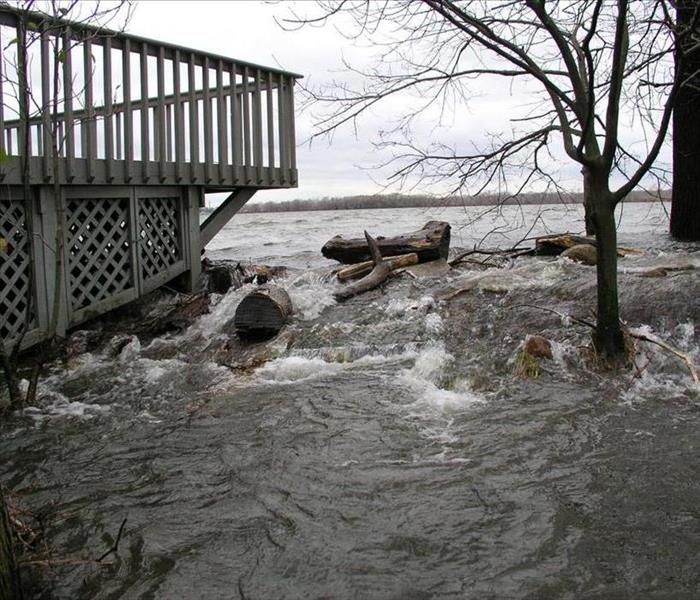 Residents living along the Delaware are at a greater risk for flood damage. SERVPRO of Levittown Newtown Yardley can help you today!
Residents living along the Delaware are at a greater risk for flood damage. SERVPRO of Levittown Newtown Yardley can help you today!
The last thing you want to see as a homeowner is standing water in your home, but some residents, especially those who live along the Delaware River, will unfortunately experience flood damage at some point. You may wonder how you will ever get all of the water out of your home. You may also think about the damage that will be left behind after the water is removed from your home. These are common concerns, and they can be dealt with through professional water remediation services.
The Damage Caused by Water in the Home
Water damage is, unfortunately, common, and it can be caused by a heavy rainstorm with torrential downpours, rising river or creek levels forcing groundwater into your house, a broken pipe or some other events that occur on the property. While there are many causes, the damage is very similar. Croydon flood damage can cause everything from warped drywall, wooden flooring, and wood furnishings to stained floors, foul odors and even mold growth. Dealing effectively with the water damage is important if you want your home restored to its former condition.
The Potential for Mold Growth
Any time water or even moist air remains in the home for more than a few days, the risk for mold growth skyrockets. Mold thrives in darker, wet areas. After a flood, your home may have many surfaces that are moist and conducive to mold growth. Mold, as a form of secondary water damage, can cause an unfortunate situation to turn into a much costlier event to correct. Rapid water extraction is the key to mitigating losses to your home's contents and structure.
How to Deal With Water Damage
A flood can cause serious damage to your Yardley, Newtown, or New Hope home and damage can be disastrous for you to deal with, especially if it causes you to evacuate your home or close your business. The good news is that you do not need to deal with flood damage on your own. Professional remediation services are available to extract standing water from your home and dry out the air so that the humidity level returns to normal. Rehabilitation services may also include stain and odor removal, professional carpet cleaning and more. Your primary goal is to improve the property so that it looks and smells like it did before the flood occurred. The clean up and sanitizing, especially after groundwater intrusion, is crucial to the restoration of a healthy and safe preloss environment. SERVPRO has the expertise and physical resources to accomplish these needed services. This can be difficult to do on your own especially when time is of the essence, so professional services are in your best interest.
At SERVPRO of Levittown Newtown Yardley, we are a locally owned company that is committed to your satisfaction with all aspects of our water restoration services. We know what it takes to improve your property after a flood event. The aftermath of a flood can be daunting, contact our office today at (215) 785-1777 for more information or 24/7 emergency service.






 24/7 Emergency Service
24/7 Emergency Service


















